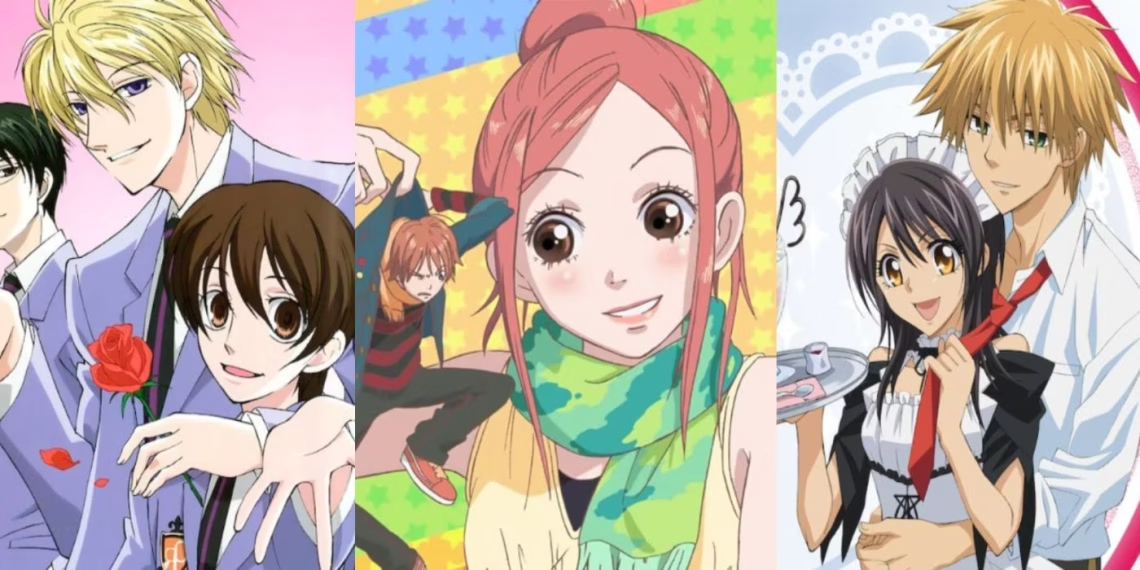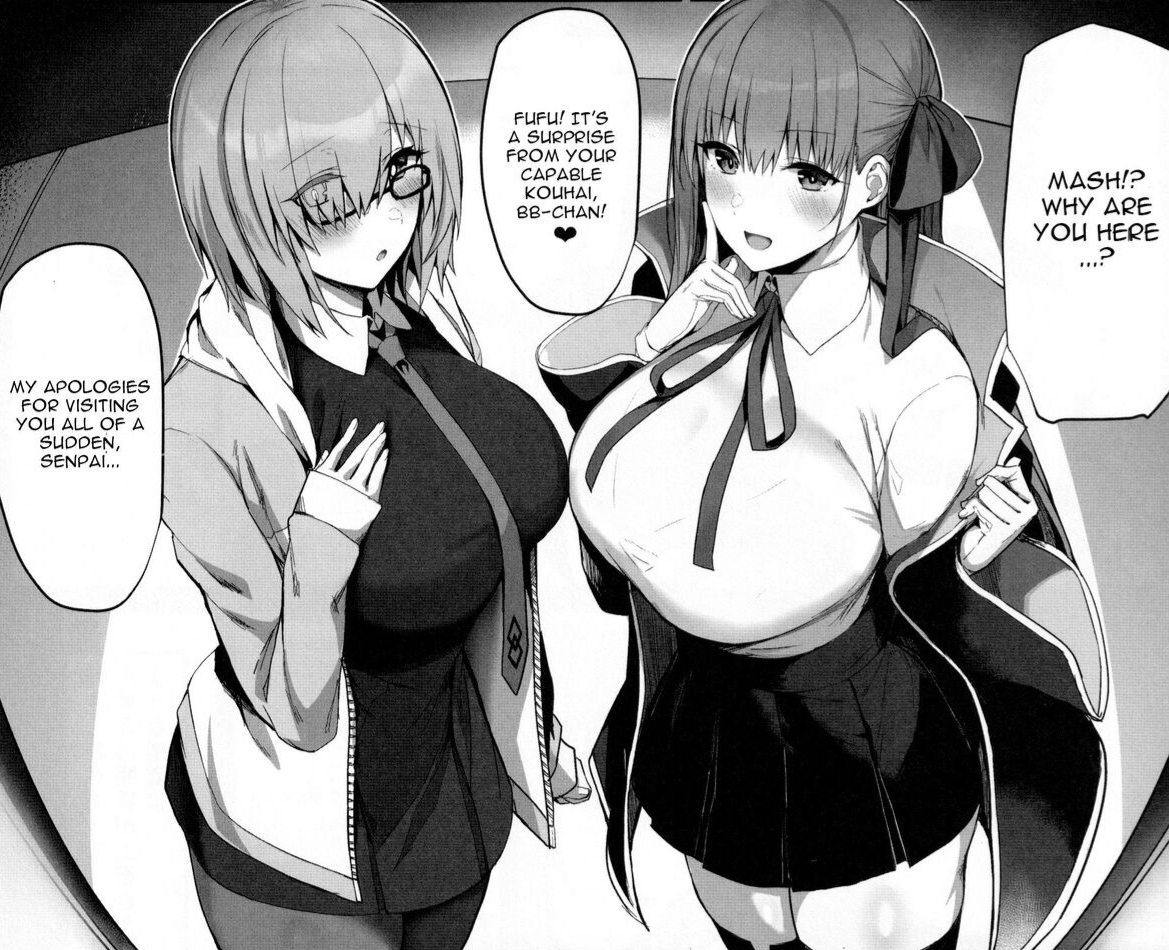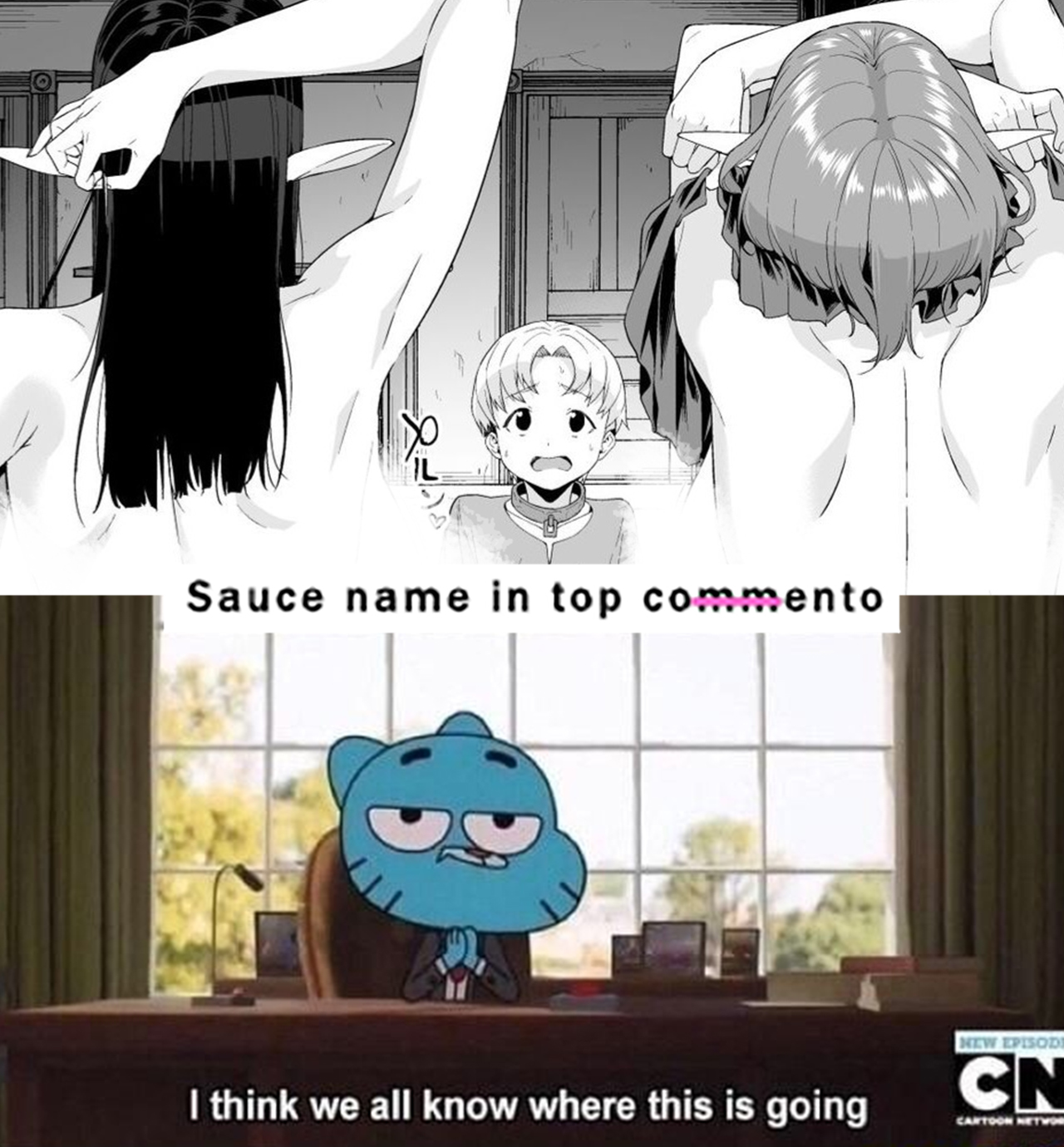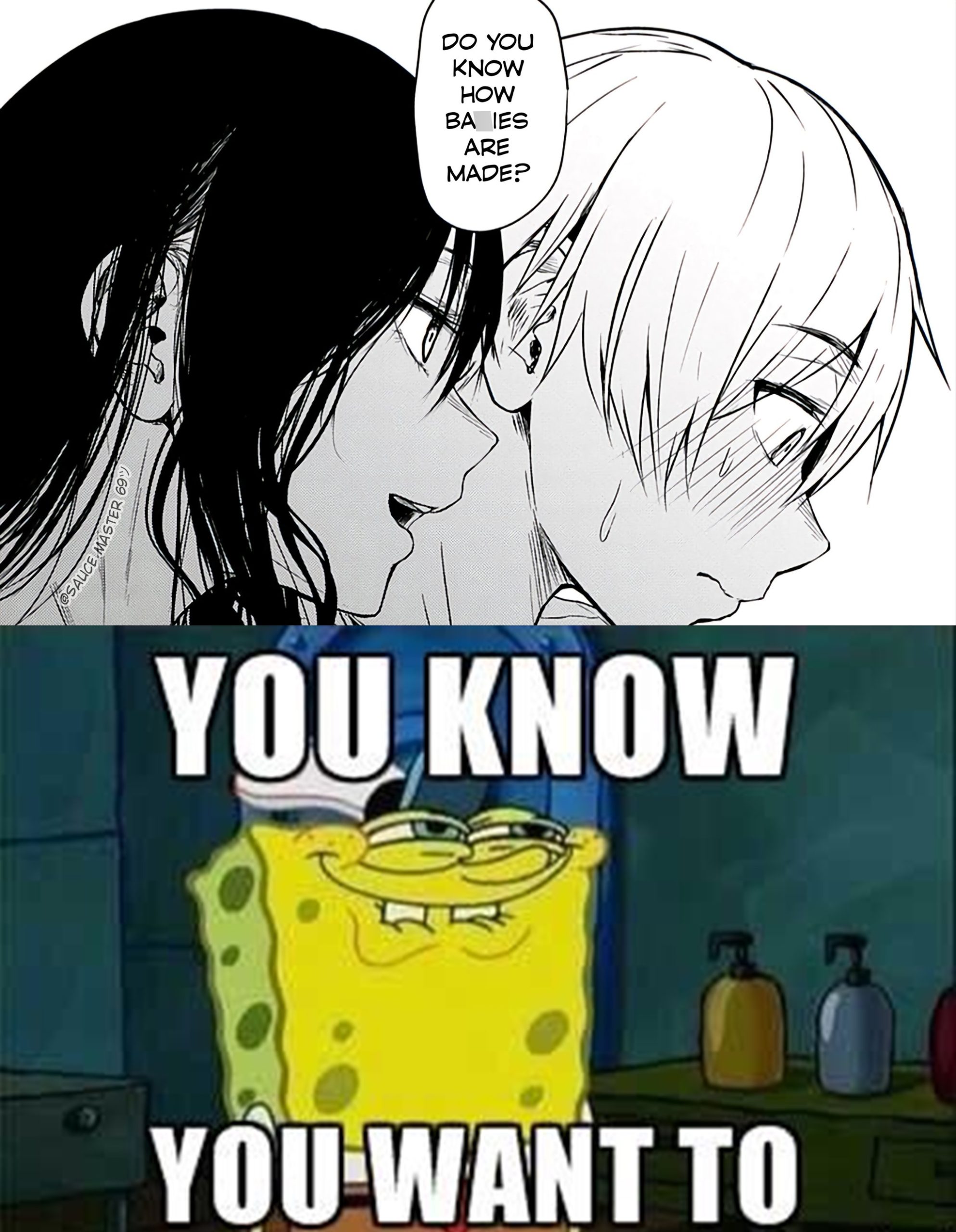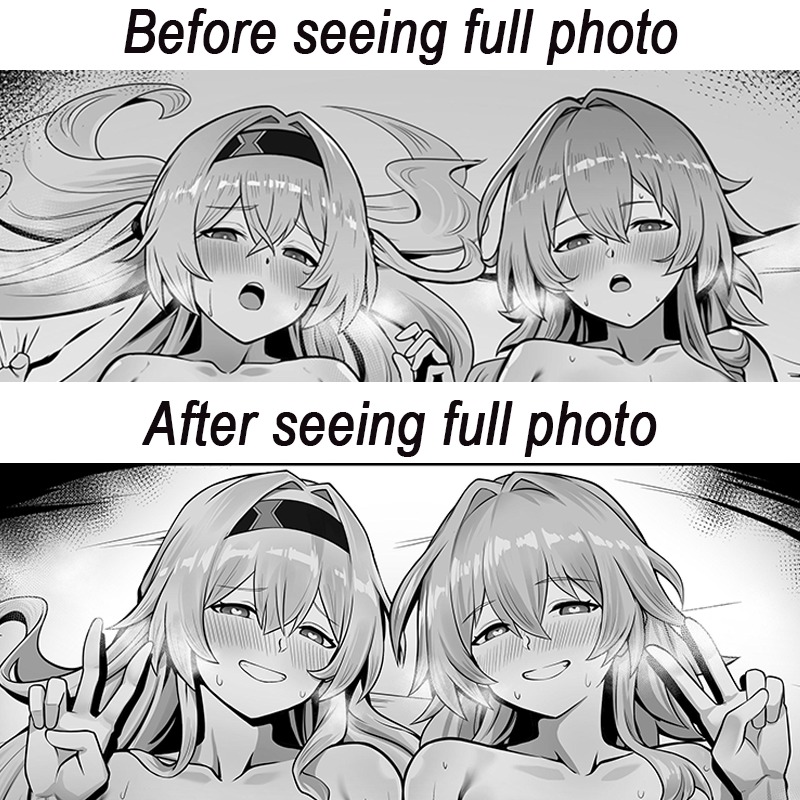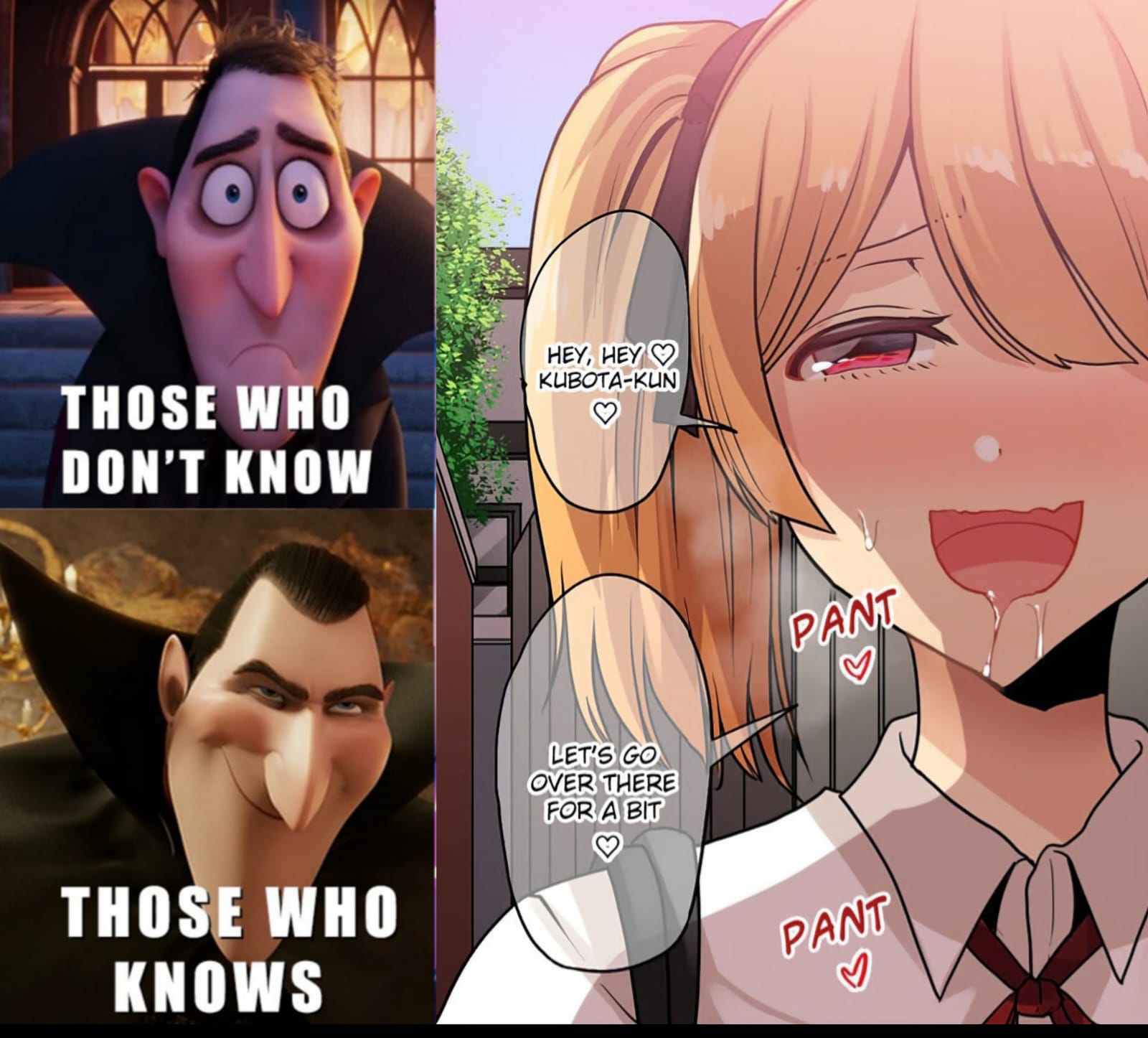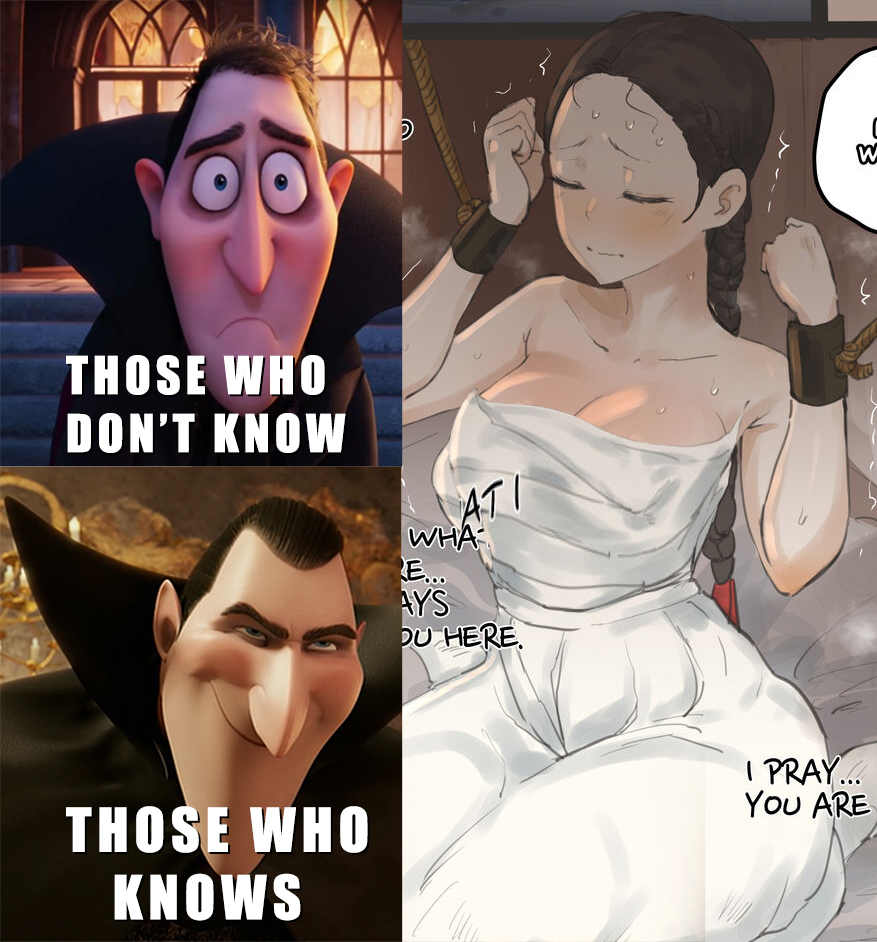ImWhile shonen anime often steals the spotlight in the West, shojo series maintains immeanse popularity worldwide. Geared toward younger female audiences, these anime offer compelling narratives that resonate with viewers of all ages and genders.
While many shojo anime are known for their romantic plots, numerous titles defy stereotypes by looking into complex emotions and unique themes. Like Shonen, the shojo demographic is incredibly diverse, spanning various genres, tones, character types, and settings. Despite being less common nowadays, shojo anime continues to carve out a distinct niche in the industry and hopefully will always find a place in it.
17. Skip Beat
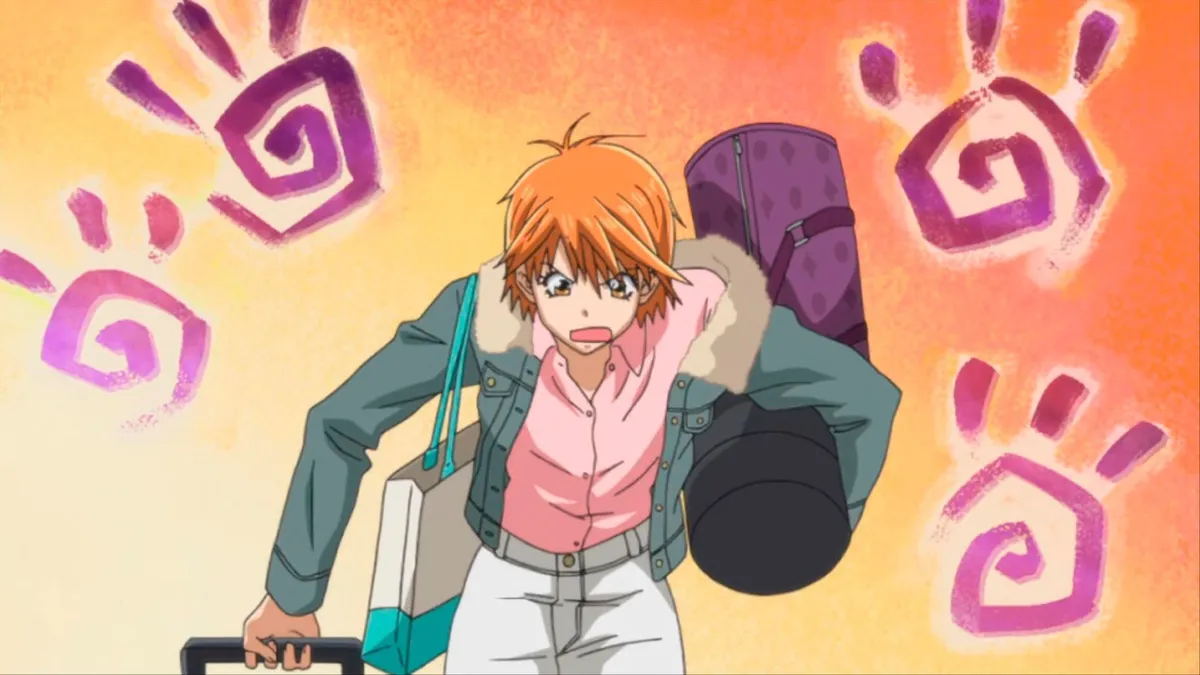
In Skip Beat!, Kyouko Mogami’s world shatters when her boyfriend, Shou, reveals his selfish intentions of using her for his own gain. Rather than succumbing to despair, Kyouko channels her pain into a quest for vengeance, determined to conquer the entertainment industry. Along the way, she encounters the dashing Ren, adding a new dimension to her journey.
Kyouko is undoubtedly one of the standout protagonists in shoujo anime, brimming with energy, charm, and a penchant for hilarity. Her dynamic presence commands attention in every scene, making her a force to be reckoned with. Supported by the contrasting personalities of Shou and Ren, Skip Beat! delivers a trio of compelling leads that fascinate audiences throughout the series.
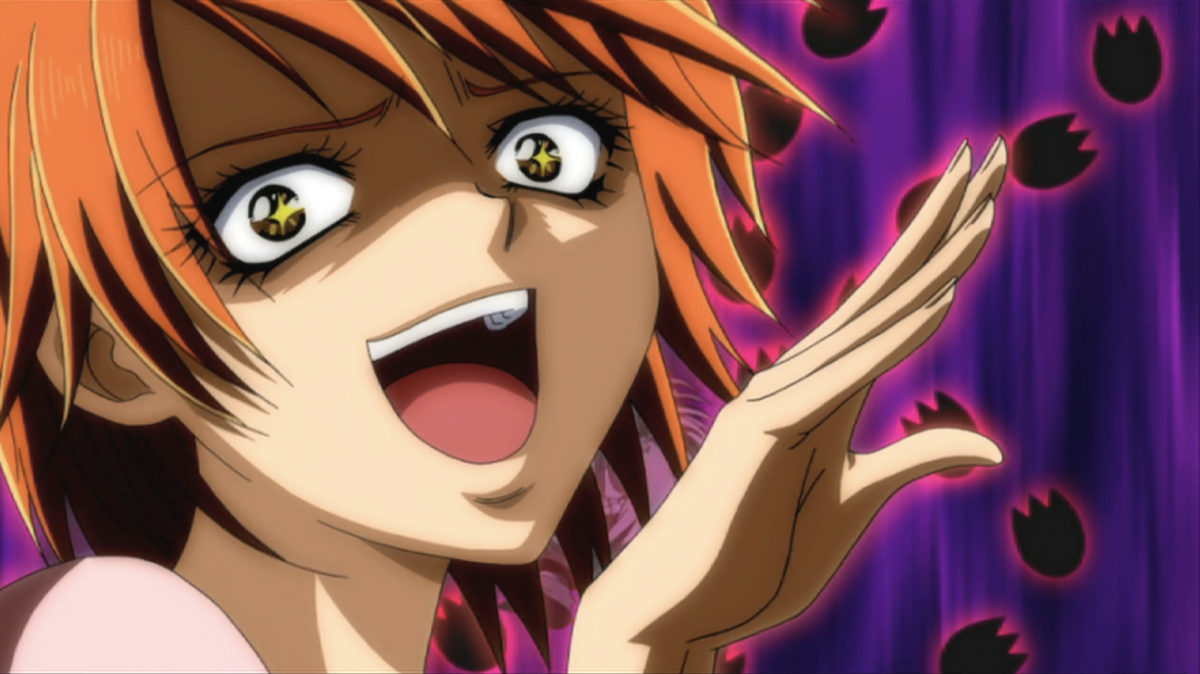
16. Cardcaptor Sakura

Since its debut in 1998, the original Cardcaptor Sakura has remained a beloved classic, a fact further solidified by its 2018 sequel, Clear Card. Sakura’s journey to reclaim the enchanting Clow Cards is a delightful blend of whimsy and adventure, featuring a rivals-to-lovers romance that steers clear of typical shojo clichés.
The series sets itself apart by subverting traditional magical girl tropes, eschewing even the customary transformation sequences, and offering a refreshing take on the genre. Despite the passage of time, Cardcaptor Sakura continues to charm audiences with its impeccable blend of comedy, drama, and action, though some viewers may need to overlook the youthful nature of the romantic entanglements. Nevertheless, the series stands as a testament to its enduring appeal and quality storytelling.
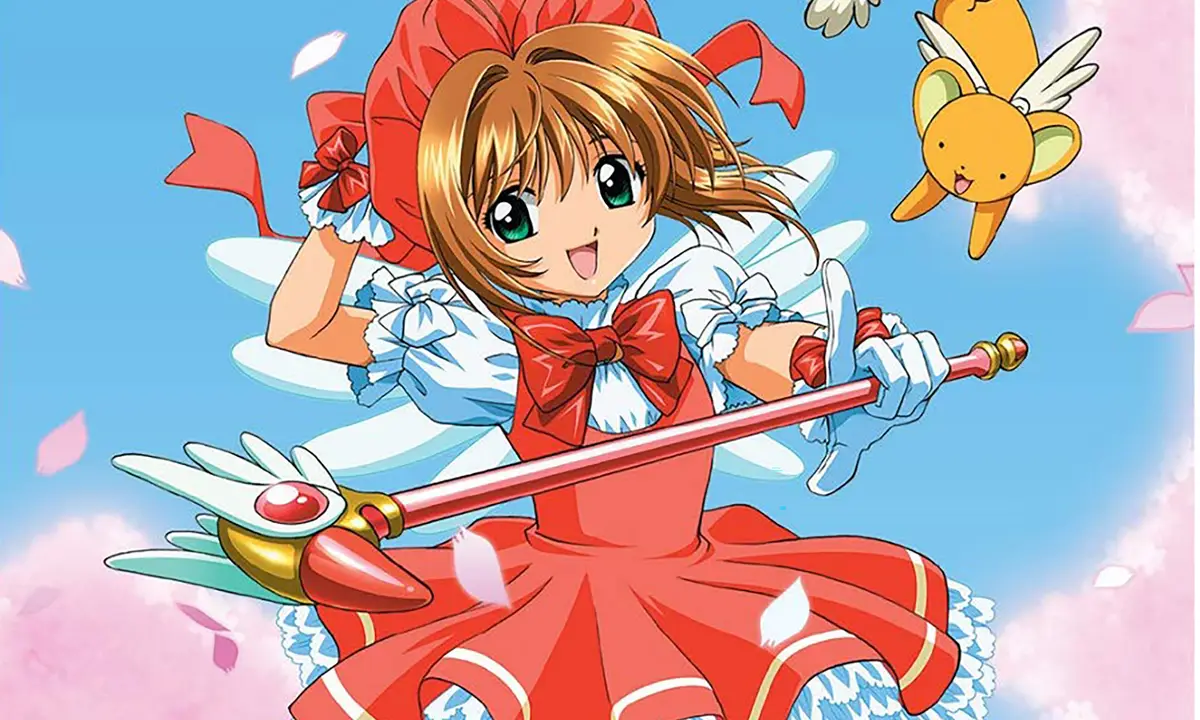
15. Kimi ni Todoke: From Me to You

Kimi ni Todoke: From Me to You tells the story of a romance blossoming from an unlikely friendship between Sawako, a girl ostracized due to her resemblance to The Ring’s Sadako, and her popular schoolmate. Despite her kind nature, Sawako’s shyness makes it difficult for her to break free from the unfair judgment of her peers and form meaningful connections. However, her world begins to shift when she catches the eye of the charming Shouta.
The anime boasts compelling characters and strikes a delicate balance between drama and comedy. Though the central romance unfolds at a leisurely pace, Sawako and Shouta’s interactions are undeniably heartwarming and endearing.
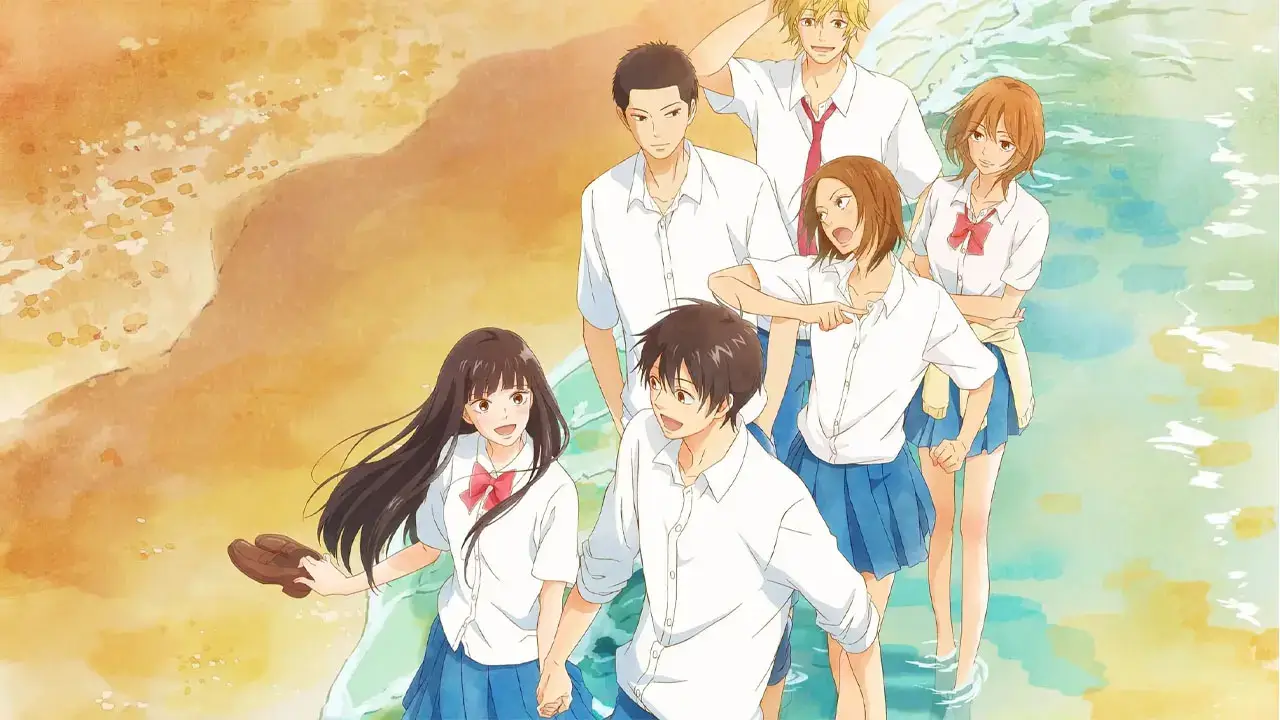
14. Kamisama Kiss
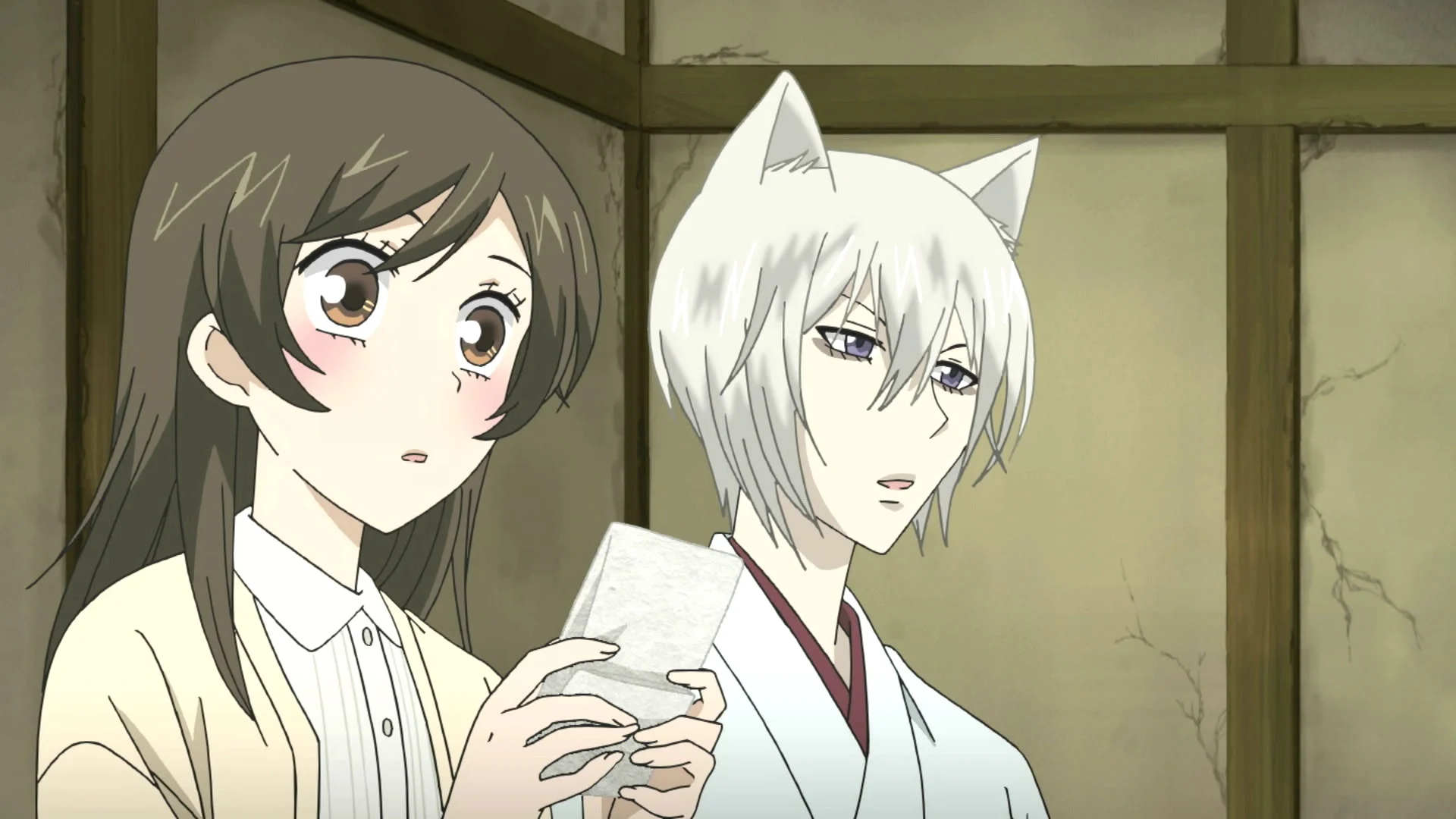
Kamisama Kiss is a delightful romantic comedy infused with a hint of the supernatural that spins a truly unique tale. It’s a story where unexpected twists lead to hilarious situations, like finding oneself suddenly homeless, rescuing a man from a dog, and even ascending to godhood! Nanami’s escapades alongside the fox spirit Tomoe bring to mind the adventurous spirit of Inu Yasha, yet with a refined touch that sets it apart.
The series has garnered such fervent fan support that it’s spawned multiple OVAs, a testament to its enduring charm and appeal.
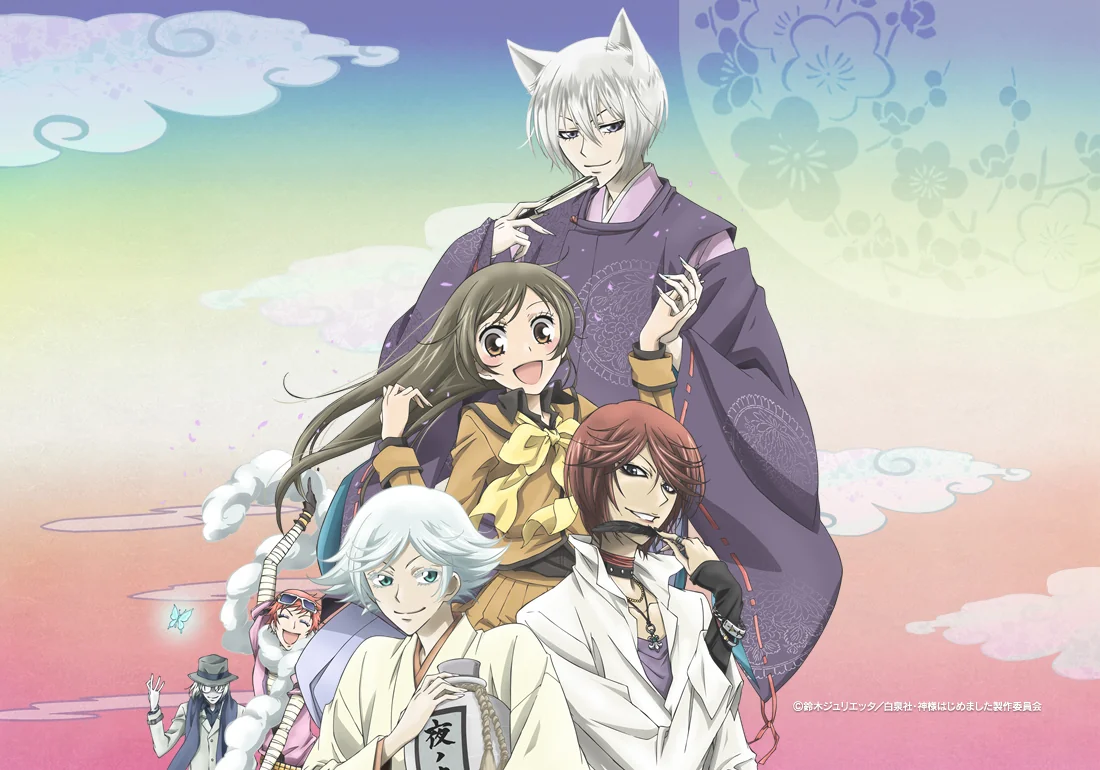
13. Revolutionary Girl Utena
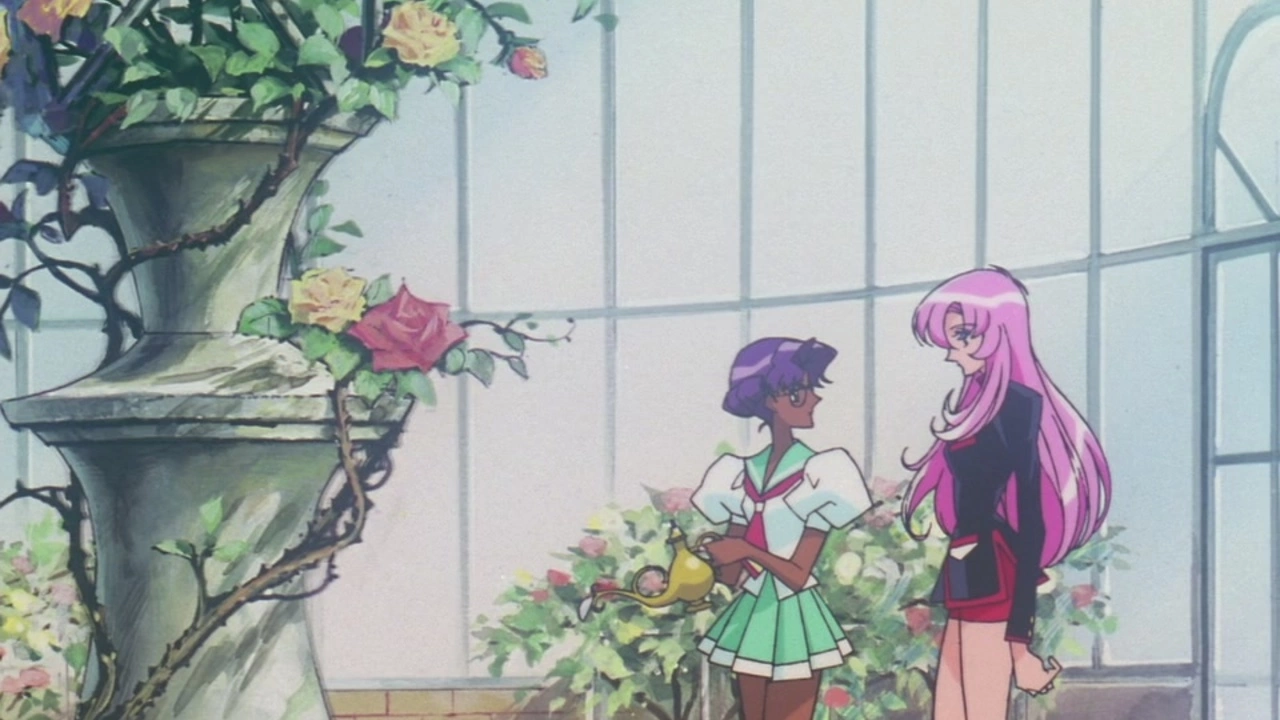
Revolutionary Girl Utena, recipient of the esteemed Best TV Animation Award in 1997, made waves as one of the pioneering anime series to introduce lesbian romance to Western audiences. Its impact was nothing short of significant. The show’s bold use of surrealism and symbolism to narrate a poignant coming-of-age tale continues to fascinate viewers to this day.
Utena’s journey at the prestigious Ootori Academy thrusts her into thrilling sword-fighting duels, unexpectedly leading to an engagement with Anthy and revealing a clandestine mission to revolutionize the world. Witnessing the gradual traveling of the series’ mysteries is undeniably gratifying. For those seeking a different perspective, the Adolescence of Utena movie offers an intriguing alternative retelling of the story.
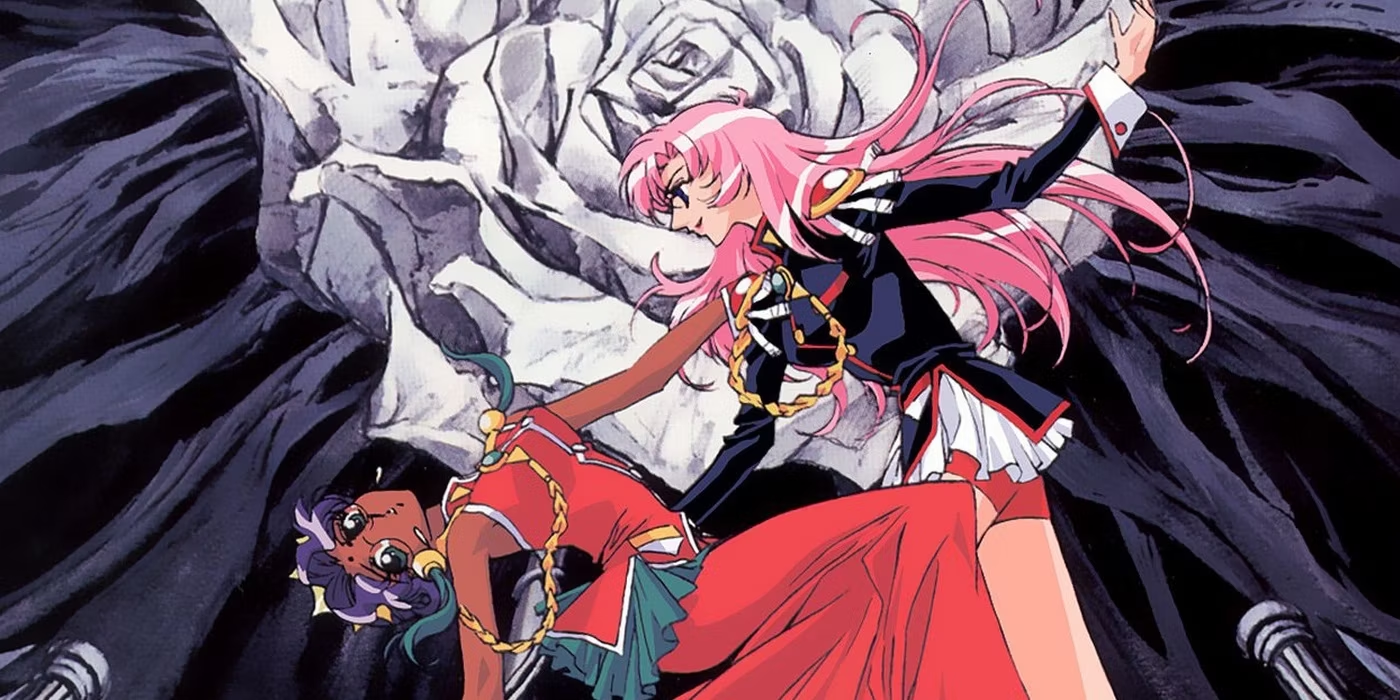
12. Natsume’s Book of Friends
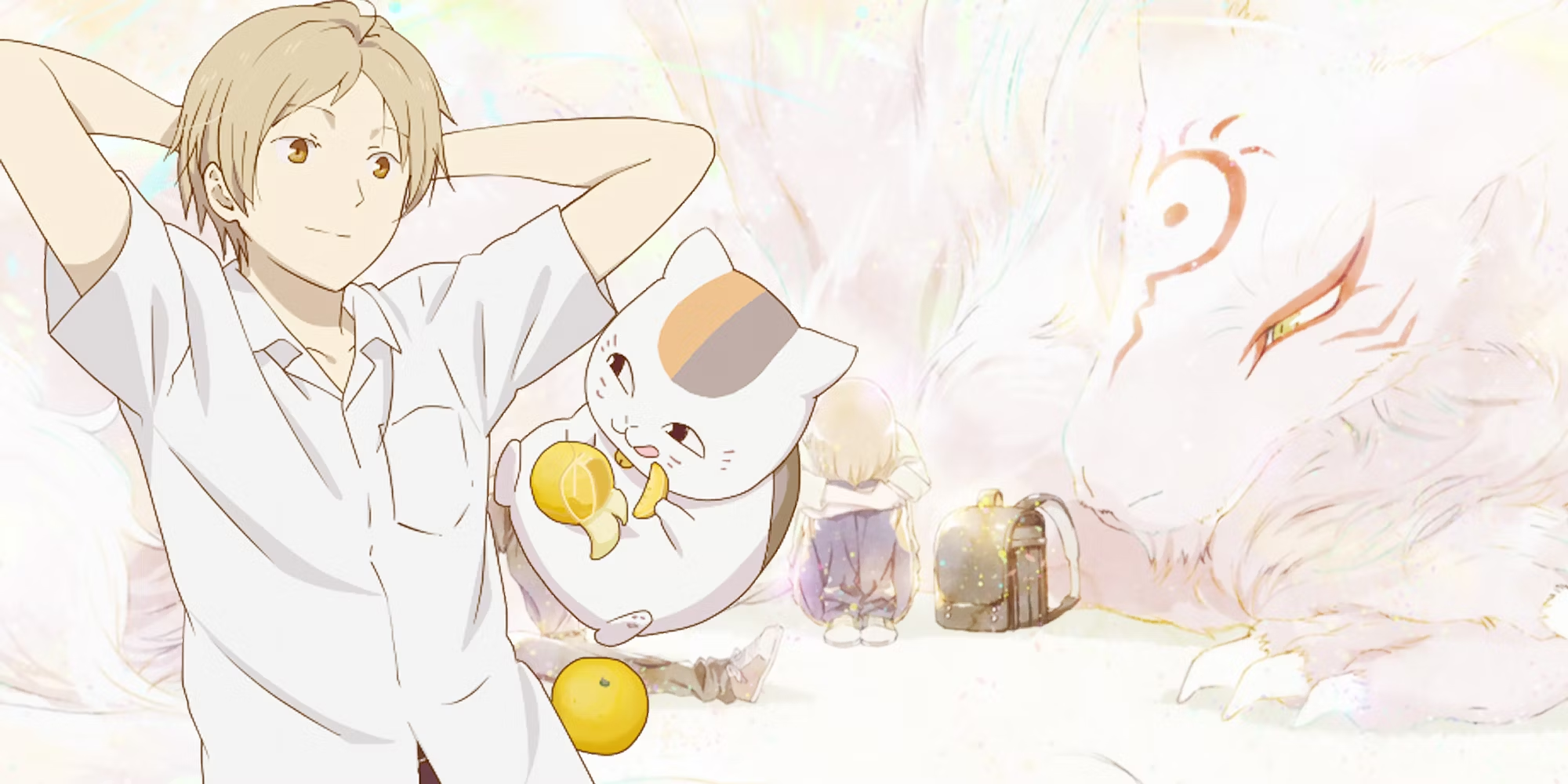
When Takashi inherits his grandmother’s Yuujinchou, also known as the Book of Friends, his ordinary life takes an extraordinary turn. Natsume’s Book of Friends chronicles his adventures as he navigates the delicate balance between avoiding the pursuit of yokai and seeking control over the spirits his grandmother had once bound.
Fortunately, Takashi isn’t alone in this supernatural journey; he finds companionship in the form of a cat spirit and self-appointed guardian named Madara. This enchanting slice-of-life anime stands as a testament to the genre’s excellence, earning its place among the shojo classics. Any anime enthusiast would do well to give it a watch.
In a manner reminiscent of Mushishi, Natsume unfolds at a leisurely pace, looking into the tranquil of yashiki.
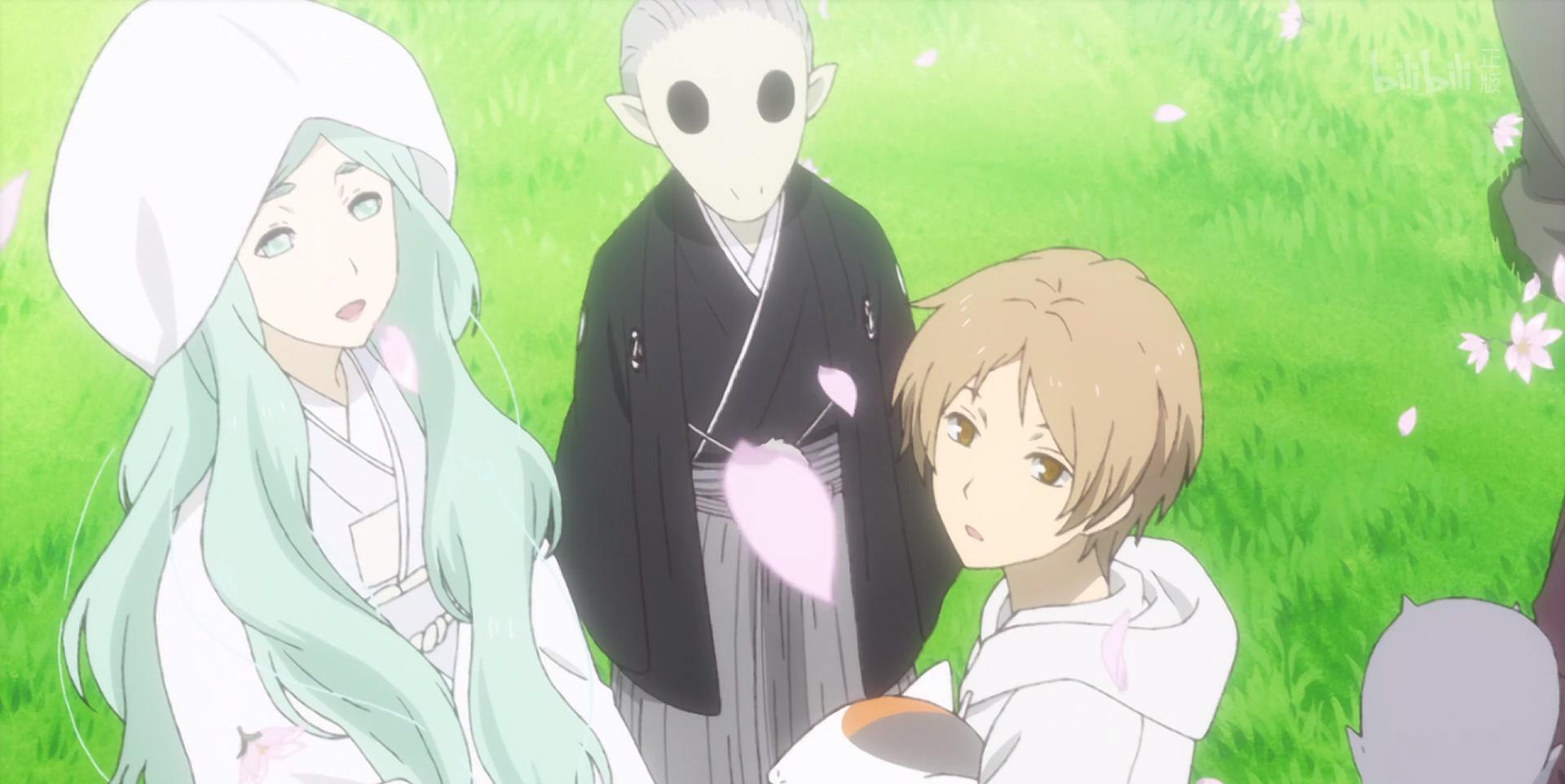
11. Fruit basket
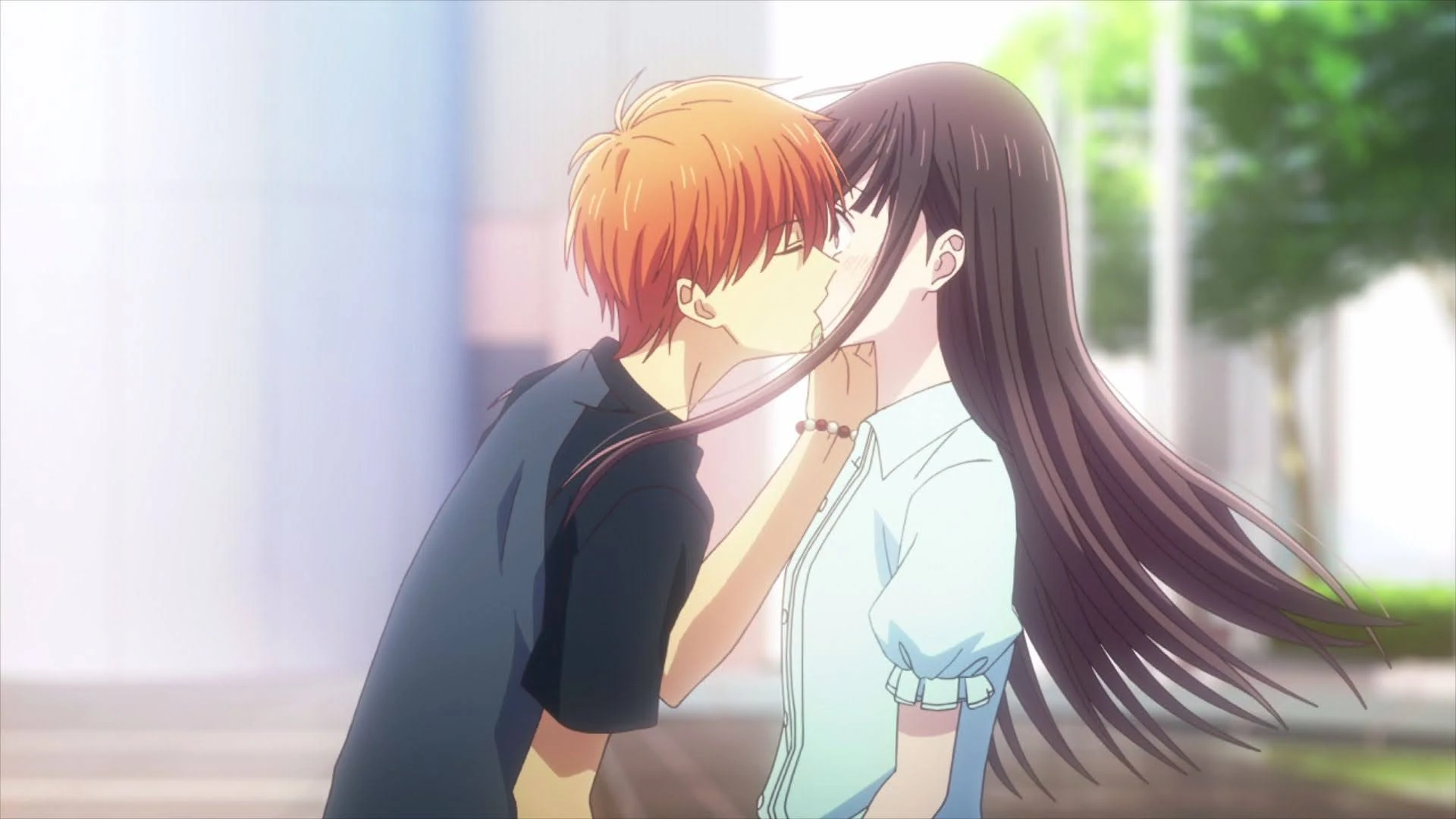
Although the original Fruits Basket series debuted in 2001, it wasn’t until 2019 that a faithful adaptation of the manga began, culminating in its conclusion in the spring of 2021, followed by an epilogue. Widely regarded as one of the most cherished shojo anime of all time, Fruits Basket encapsulates the breadth, depth, and intricacy of the demographic.
Centered around Tooru and her life within the Souma household, the series looks like a fascinating tale of discovery and transformation. Tooru learns of the family’s unique curse: each member transforms into one of the animals from the Chinese zodiac when embraced by someone of the opposite gender. Within this fantastical premise lies a rich of romance and drama, rooted in both intra- and interpersonal struggles.
Throughout its three seasons, Fruits Basket charts Tooru’s poignant journey of self-realization, mirrored by the profound growth of the Souma family’s core members. With its stellar animation, masterful storytelling, and boundless heart, Fruits Basket stands as a masterpiece transcending any demographic boundaries.
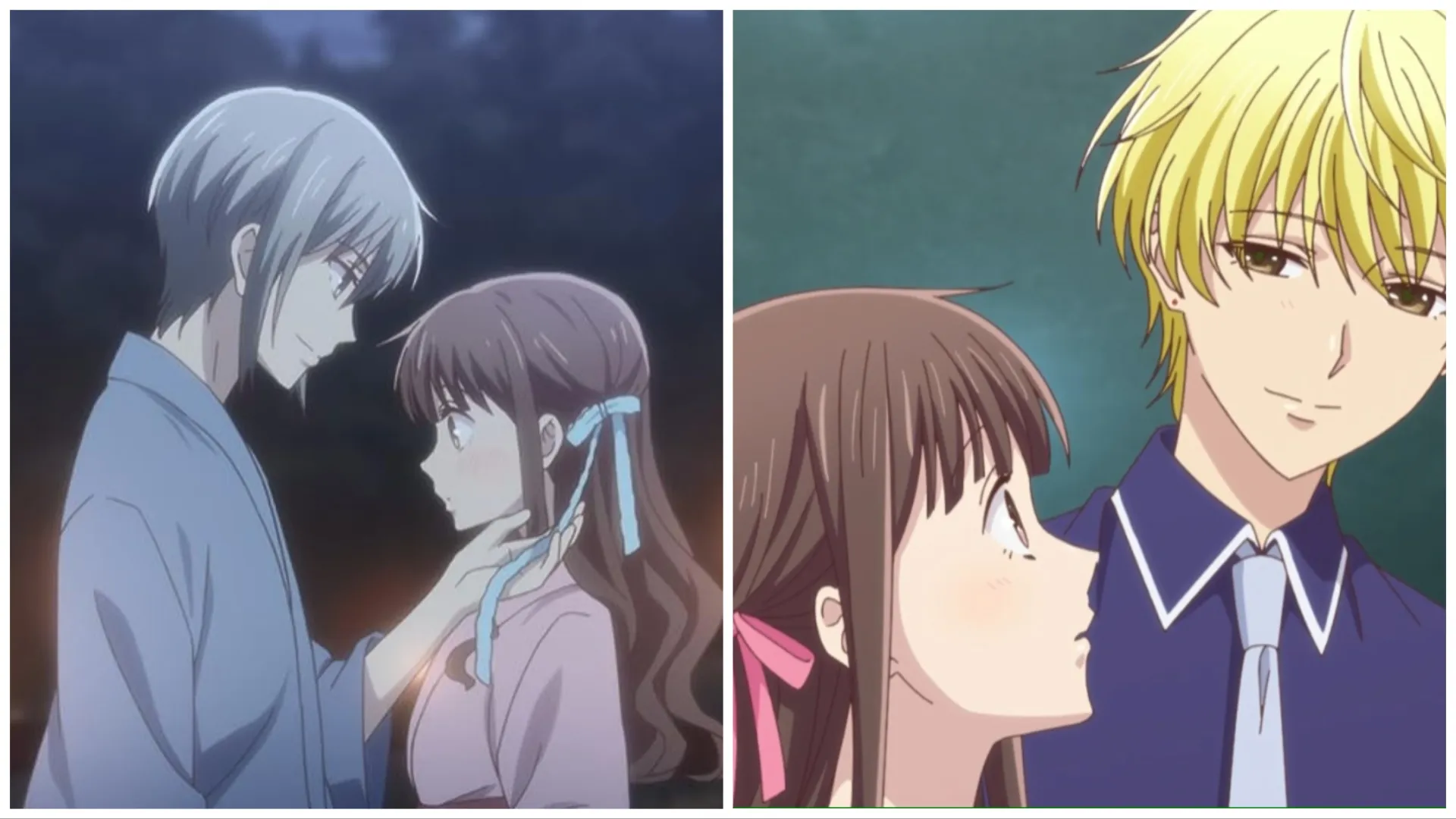
10. Banana Fish
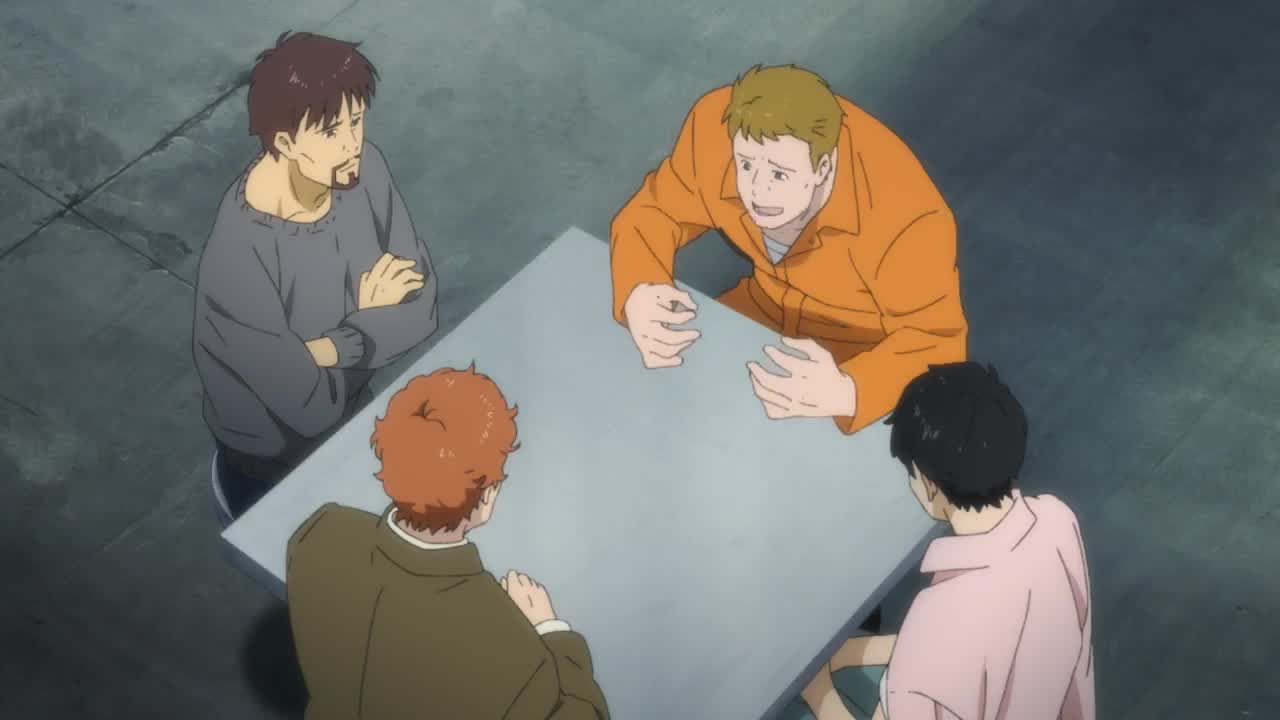
Part of Akimi Yoshida’s 40th-anniversary commemoration project, Banana Fish breaks the mold of typical shojo anime in remarkable ways. How many shojo series look into the narrative of a boy raised by a mafia boss, Traveling a mystery intertwined with the Iraq War? Just one — Banana Fish.
Darker and grittier than most shojo fare, the series confronts themes such as drug abuse, PTSD, and sexual assault. Viewers should take note of potential triggers and consider content warnings before diving into Banana Fish. Despite its weighty subject matter, the show navigates these themes with sensitivity and raw authenticity, delivering a gripping narrative fraught with tension and heartache.
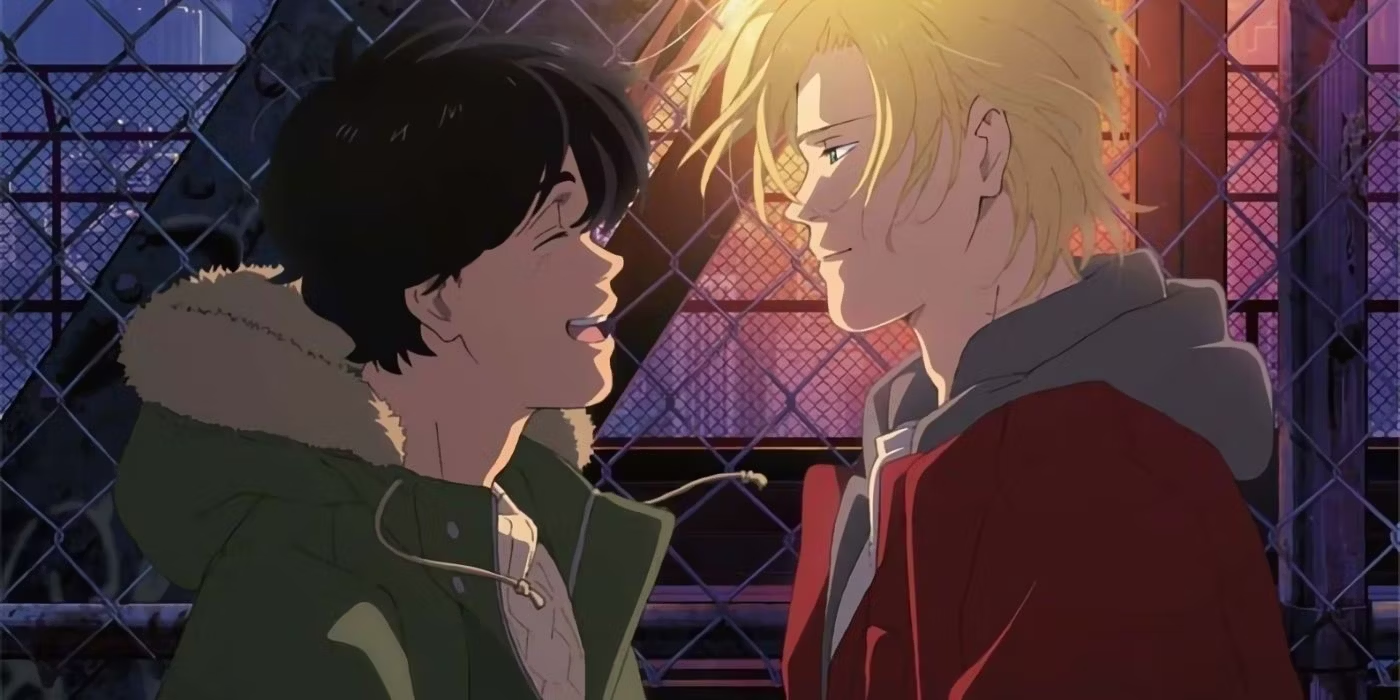
9. The Rose of Versailles
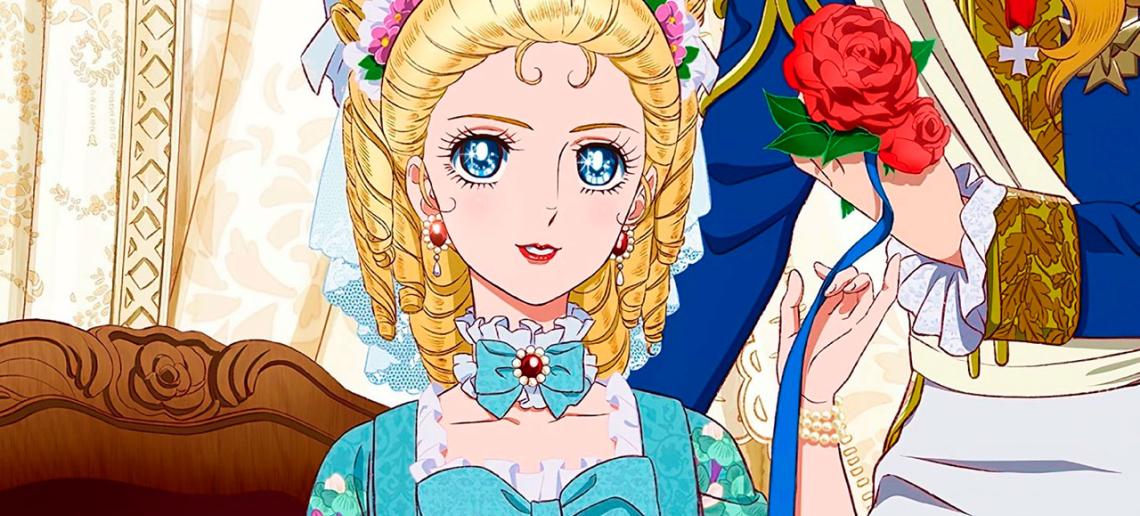
Even after four decades, The Rose of Versailles remains a timeless masterpiece and stands as one of the finest historical shojo anime of all time. Its alternate retelling of the events preceding the French Revolution continues to fascinate audiences just as it did upon its debut in 1979.
At the heart of the series lies the compelling romance between Oscar François de Jarjeyes and her childhood companion Andre. Their love story is fraught with obstacles, including societal divides and Oscar’s upbringing as a male to lead the royal guard. The Rose of Versailles fearlessly explores themes of sexual and gender identity, as well as the quest for belonging, resonating deeply with fans of historical dramas.
With its storytelling and nuanced character development, The Rose of Versailles delivers everything aficionados of the genre cherish, ensuring its enduring relevance and acclaim.
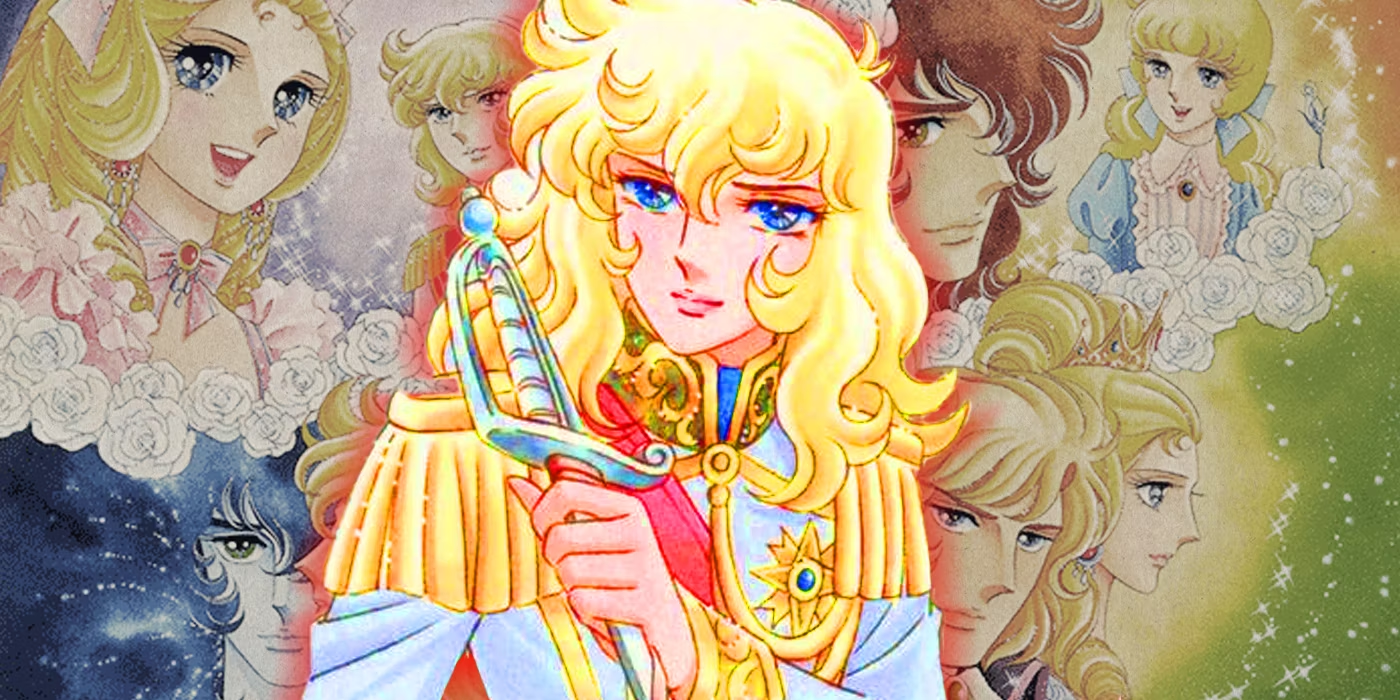
8. A Sign of Affection
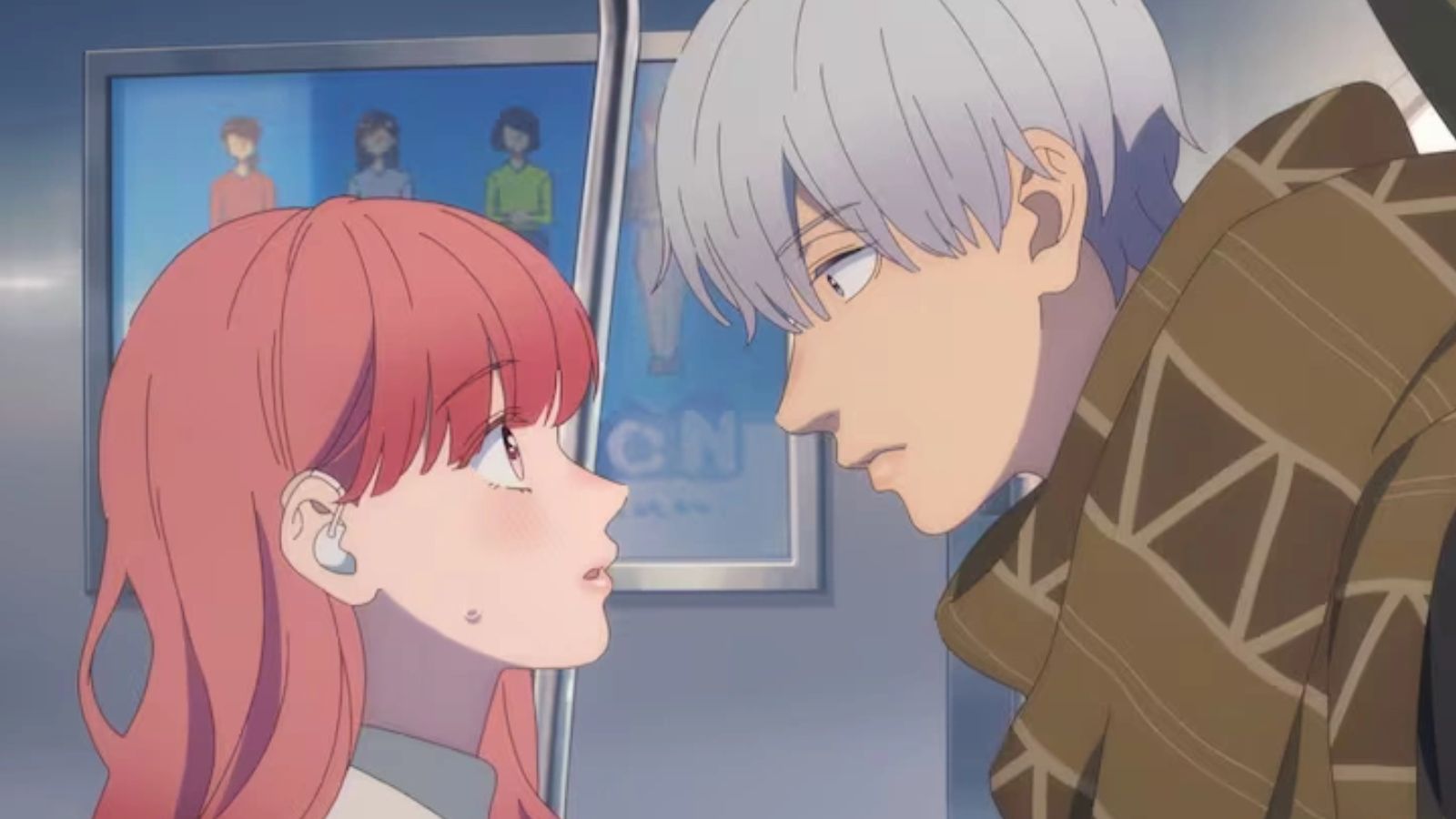
A Sign of Affection undoubtedly stands out as one of the best romance anime, despite airing alongside the acclaimed second season of The Dangers in My Heart. Ajia-do’s production deserves its own spotlight for delivering a fantastic series.
The story follows Yuki, a hearing-impaired college student whose life takes a turn when she has a charming encounter with Itsuomi, a globetrotter with a passion for languages. Their instant connection sparks a journey of mutual discovery and heartfelt romance as they navigate their budding relationship.
What sets A Sign of Affection apart is its portrayal of an older cast and their mature interactions. While tension isn’t absent, the series primarily exudes cuteness and uplifts viewers, largely due to the irresistible chemistry between Itsuomi and Yuki.
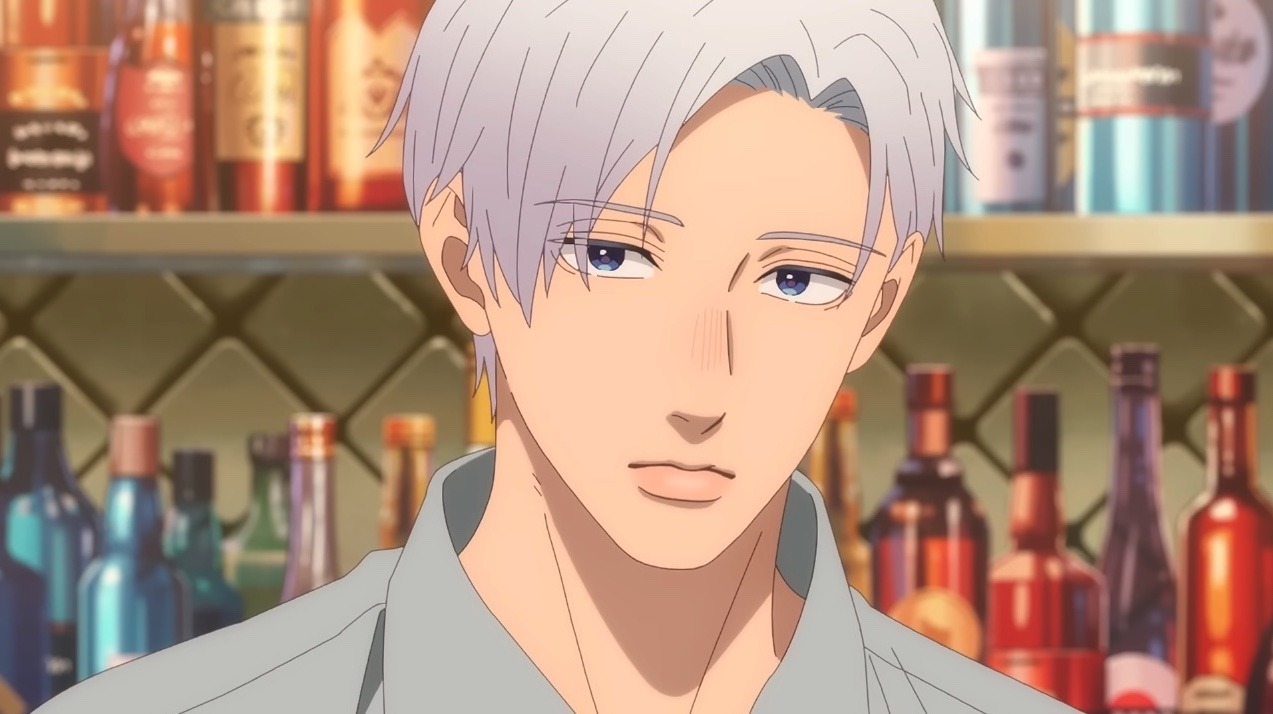
7. Yona of the Dawn
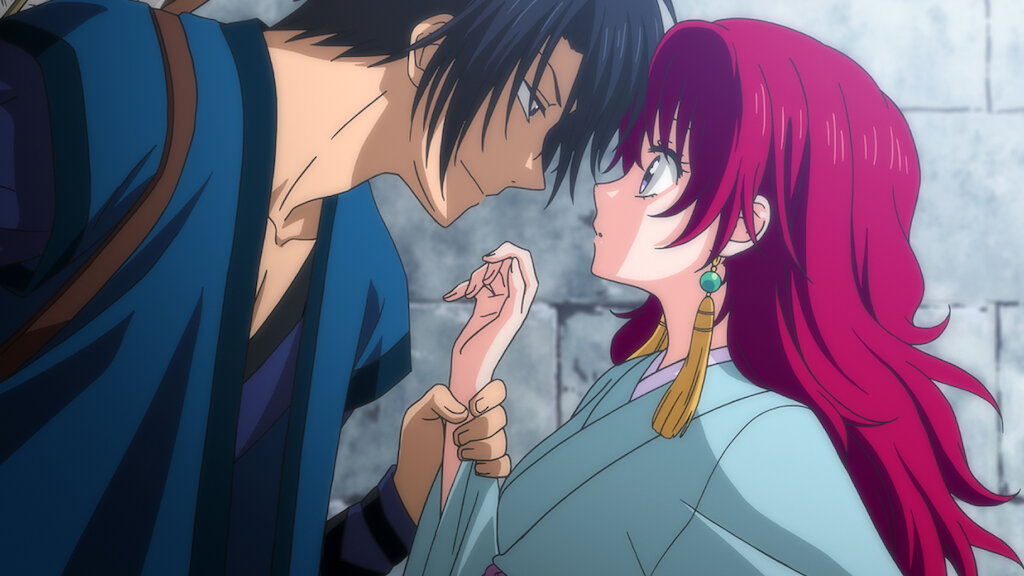
Since its inception in 2009, Mizuho Kusanagi’s Yona of the Dawn has solidified its position as one of the premier shojo manga series available. While Pierrot’s anime adaptation may not receive the same level of acclaim, this discrepancy largely stems from the fact that the anime covers only a fraction of the source material. Judged solely on the quality of the adapted content, Yona of the Dawn proves to be quite impressive.
Set in a nation besieged by more formidable neighbors, the story revolves around Yona, the sheltered princess of the kingdom’s ruler. A sudden coup shatters her world, forcing her to flee with only Hak, her loyal bodyguard, by her side. Determined to reclaim her rightful throne and unite the fractured kingdom, Yona looks on a quest to locate four legendary warriors. Along the way, she undergoes a profound transformation, evolving from a pampered royal into a formidable warrior, showcasing her rapid maturity and resilience.
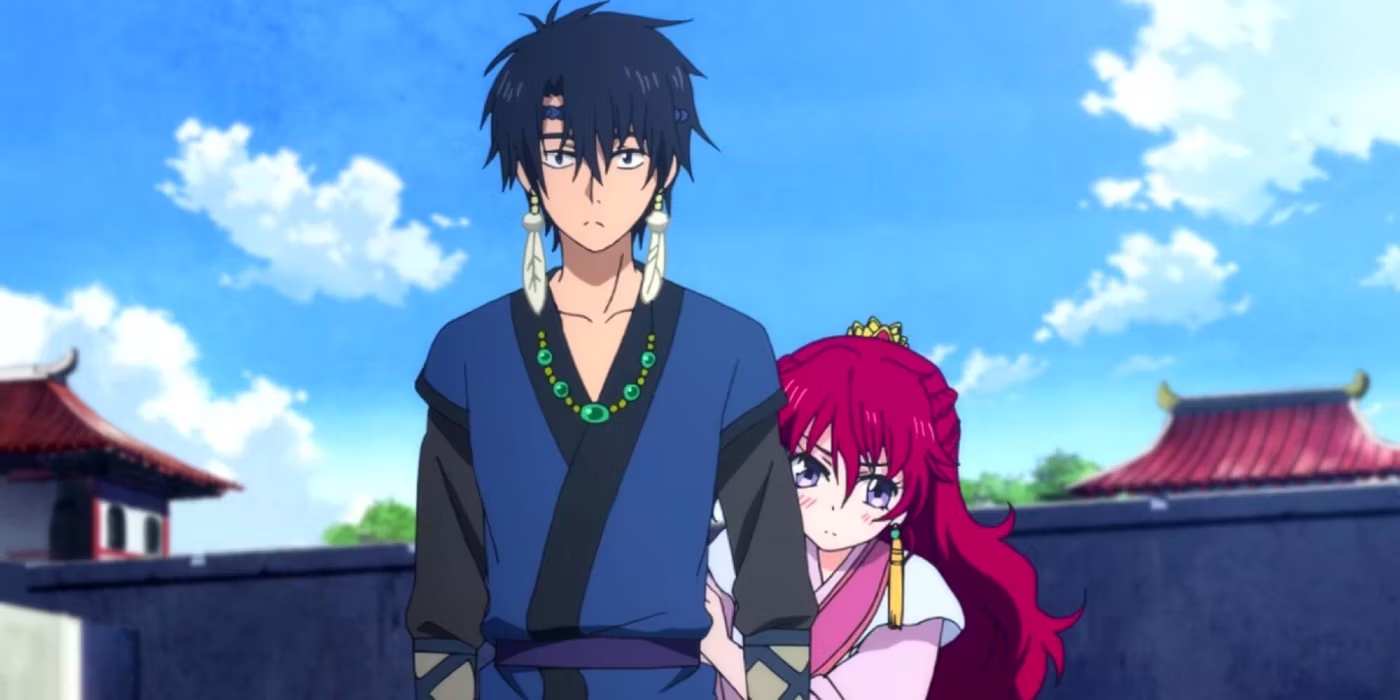
6. Ouran High School Host Club

Ouran High School Host Club ingeniously takes stereotypical character archetypes and gradually evolves them throughout its runtime. Looking into themes of gender and presentation, the series introduces us to Haruhi, who, after an expensive mishap, finds herself reluctantly assuming the role of the host club’s boy.
Despite its 2006 release, the show’s enduring popularity speaks volumes about its exceptional characterization and humor. Ouran’s wit and charm make it a standout among anime comedies, earning it a well-deserved reputation as one of the funniest series of all time.
“Ouran High School Host Club” is a beloved shoujo manga series written and illustrated by Bisco Hatori. Serialized in Hakusensha’s “LaLa” magazine from 2002 to 2010, the series was later compiled into 18 tankōbon volumes. It was adapted into a popular anime by Studio Bones, which aired in 2006. Known for its humorous and heartfelt exploration of gender roles, class dynamics, and teenage romance, “Ouran High School Host Club” has garnered a dedicated fanbase and remains a staple in the shoujo genre.
The story centers on Haruhi Fujioka, a scholarship student at the prestigious Ouran Academy, which caters to the wealthy elite. Haruhi, who is pragmatic and indifferent to material wealth, stands out in a school full of opulence and privilege. One day, while searching for a quiet place to study, Haruhi stumbles upon the school’s Host Club, a group of attractive male students who entertain female clients with tea, conversation, and charm.
Mistaken for a boy due to her short hair and androgynous appearance, Haruhi accidentally breaks an expensive vase and is coerced into working for the Host Club to repay the debt. The club members soon discover her true gender, but they decide to keep it a secret and let her continue posing as a male host. This setup leads to a series of comedic and heartwarming events as Haruhi navigates her new role, develops friendships with the club members, and learns more about their personal lives.
“Ouran High School Host Club” plays with traditional gender roles and challenges societal expectations. Haruhi’s androgynous appearance and indifference to gender norms allow the series to explore themes of identity and self-expression. The club members’ initial reactions to Haruhi’s gender reveal and their subsequent acceptance highlight the fluidity of gender and the importance of seeing beyond stereotypes.
The series provides a satirical look at the lives of the wealthy elite, often contrasting Haruhi’s humble background with the extravagant lifestyles of her classmates. This juxtaposition offers a critique of class dynamics and emphasizes the value of hard work, humility, and genuine connections over material wealth.

At its core, “Ouran High School Host Club” is about friendship and acceptance. Each club member has their own quirks and insecurities, and Haruhi’s presence helps them confront and embrace their true selves. The series celebrates the power of friendship in overcoming personal challenges and fostering mutual understanding.
The series masterfully blends romance and comedy, using the Host Club’s various antics to create humorous situations while also developing romantic tensions. The interactions between Haruhi and the club members, especially Tamaki, are filled with comedic misunderstandings and heartfelt moments, adding depth to the story.
Haruhi is the series’ protagonist, a bright and independent scholarship student. Her pragmatic approach to life and indifference to gender norms make her a refreshing and relatable character. Haruhi’s journey in the Host Club helps her discover more about herself and the complexities of human relationships.
Tamaki is the flamboyant and charismatic president of the Host Club. Despite his superficial charm, he is deeply caring and often acts as a father figure to the club members. His growing affection for Haruhi adds a romantic element to the story.
Kyoya is the intelligent and calculating vice-president of the Host Club. He manages the club’s finances and operations, often acting as a pragmatic counterbalance to Tamaki’s exuberance. Kyoya’s reserved nature hides a complex personality and a deep loyalty to his friends.
The mischievous twin brothers, Hikaru and Kaoru, enjoy playing pranks and confusing others with their identical appearances. Their close bond is tested by their developing feelings for Haruhi, leading to significant character growth.
Honey is a small, cute, and seemingly innocent boy with a love for sweets and cute things. Despite his appearance, he is a martial arts expert. His childlike demeanor contrasts with his hidden strength and maturity.
Mori is Honey’s stoic and protective cousin. He speaks little but is fiercely loyal and caring. Mori’s quiet strength and gentle nature provide a calming presence in the club.
Bisco Hatori’s art style in “Ouran High School Host Club” is detailed and expressive, perfectly capturing the characters’ emotions and the series’ comedic moments. The character designs are distinctive, with each club member having unique features that reflect their personalities. The settings, from the lavish Host Club room to the various extravagant locales they visit, are richly illustrated, enhancing the series’ whimsical and luxurious atmosphere.
The anime adaptation by Studio Bones maintains the manga’s charm, with vibrant animation, dynamic character expressions, and a fitting soundtrack. The voice acting is particularly noteworthy, bringing the characters to life and adding depth to their interactions.
“Ouran High School Host Club” has been highly praised for its engaging story, memorable characters, and clever blend of comedy and romance. The series’ exploration of gender roles and class dynamics has resonated with many readers and viewers, offering a refreshing perspective within the shoujo genre. The anime adaptation further boosted the series’ popularity, introducing it to a global audience and cementing its status as a classic.
Critics and fans alike have commended the series for its balance of humor and heartfelt moments, as well as its ability to address serious themes with a lighthearted touch. The character development and the evolving relationships between Haruhi and the club members are often highlighted as key strengths of the series.
“Ouran High School Host Club” is a delightful and thought-provoking series that continues to entertain audiences with its humor, heart, and insightful commentary on gender and society. Through the journey of Haruhi Fujioka and her experiences with the eccentric members of the Host Club, the series offers a compelling narrative about friendship, acceptance, and the courage to be oneself.
Bisco Hatori’s masterful storytelling and charming artwork create a world that is both fantastical and relatable, inviting readers and viewers to laugh, cry, and reflect on their own lives. Whether through the pages of the manga or the vibrant episodes of the anime, “Ouran High School Host Club” remains a beloved and enduring favorite in shoujo manga and anime.
5. Maid Sama
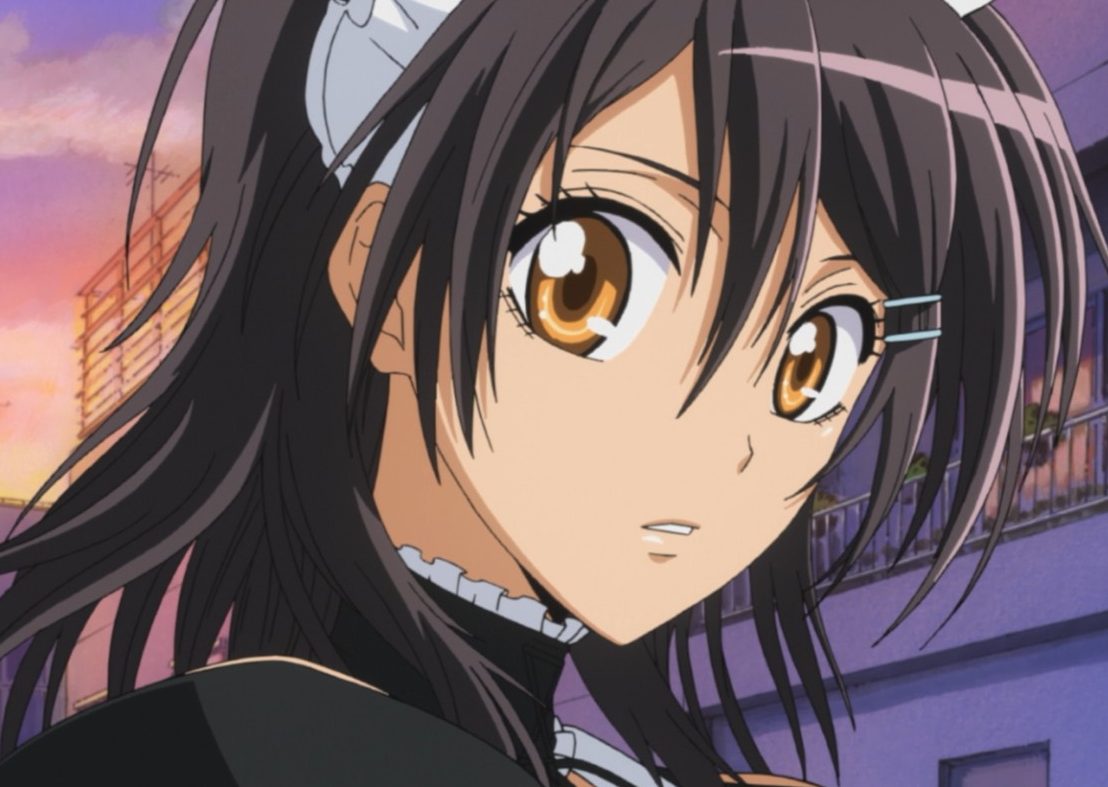
Despite showing its age in some aspects, Maid Sama! remains a prominent figure in the shojo genre, with its enduring strengths overshadowing any weaknesses. Misaki, as the disciplined student council president, runs her school with an iron fist, particularly when it comes to interactions with boys. However, Takumi Usui, unlike most, actively seeks her company, frequenting the maid café where Misaki works.
The series excels in its humor, with Misaki and Takumi’s dynamic personalities complementing each other seamlessly. Misaki often appears as an unstoppable force, constantly pushing her limits to support her family, while Takumi effortlessly exudes a cool demeanor. Their interactions are a highlight of Maid Sama!, contributing to its lasting appeal in the shojo scene.
“Maid Sama!” (originally titled “Kaichou wa Maid-sama!”) is a popular Japanese manga series written and illustrated by Hiro Fujiwara. It was serialized in Hakusensha’s “LaLa” magazine from 2005 to 2013, later compiled into 18 tankōbon volumes. The series was adapted into a 26-episode anime by J.C.Staff, which aired in 2010. “Maid Sama!” is celebrated for its engaging characters, humor, and the blend of romantic and comedic elements, making it a beloved series among shoujo fans.
The story centers on Misaki Ayuzawa, a determined and hardworking high school girl who serves as the first female student council president at Seika High School. Once an all-boys school, Seika High has recently become co-ed, and Misaki is dedicated to improving the school’s environment for female students. Misaki is known for her strict, no-nonsense attitude and her efforts to keep the unruly boys in line.
However, Misaki harbors a secret: to support her family financially, she works part-time at a maid café, where she dons a maid uniform and adopts a subservient persona completely at odds with her stern image at school. Misaki’s secret is discovered by Takumi Usui, a popular and enigmatic student at Seika High. Instead of exposing her, Usui takes an interest in Misaki, often teasing her while gradually developing a deep affection for her.
As the series progresses, the dynamic between Misaki and Usui evolves from adversarial to romantic. The story explores their growing relationship, Misaki’s struggles to balance her responsibilities, and the various challenges they face together.
“Maid Sama!” goes into themes of empowerment and gender roles through Misaki’s character. As the student council president, Misaki defies traditional gender expectations by asserting her authority in a male-dominated environment. Her part-time job at the maid café adds complexity, highlighting societal expectations of women and the dichotomy between public and private personas.
Misaki’s double life as a strict president and a demure maid embodies the theme of identity and duality. The series explores the challenges of maintaining one’s identity in different social contexts and the pressures to conform to various roles. Misaki’s journey towards accepting both facets of her identity is central to the narrative.
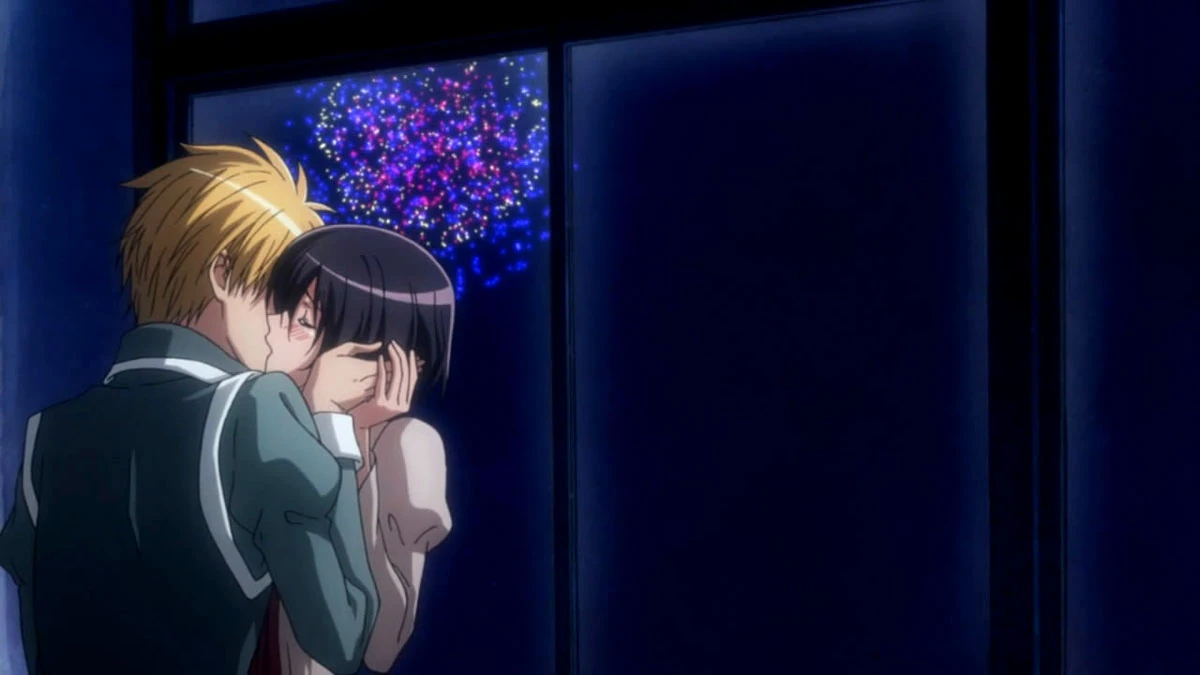
The romance between Misaki and Usui is a core element of the series. Their relationship develops gradually, moving from mutual annoyance to deep affection. Usui’s unwavering support and understanding help Misaki embrace her vulnerabilities, while Misaki’s determination and strength inspire Usui. Their dynamic showcases the growth that comes from genuine connections.
“Maid Sama!” balances its serious themes with humor and lighthearted moments. The comedic interactions between Misaki and Usui, along with the antics of the supporting characters, provide a refreshing contrast to the more dramatic elements of the story.
Misaki is the protagonist, known for her strong will, intelligence, and dedication. Her dual role as a stern president and a maid highlights her multifaceted personality. Misaki’s journey of self-discovery and her evolving relationship with Usui are central to the series.
Usui is a popular student with a mysterious background. He is highly skilled in various areas, from academics to martial arts. Usui’s interest in Misaki and his playful yet caring demeanor add depth to his character. His support and love for Misaki drive much of the romantic plot.
Hiro Fujiwara’s art style in “Maid Sama!” is distinctive and visually appealing. The character designs are detailed, with expressive faces that effectively convey emotions. The contrast between Misaki’s stern demeanor at school and her cute appearance as a maid is well-captured through the artwork. The settings, from the bustling school environment to the charming maid café, are vividly depicted, enhancing the story’s atmosphere.
The anime adaptation by J.C.Staff maintains the manga’s visual charm, with fluid animation and vibrant colors. The voice acting and soundtrack complement the series’ tone, bringing the characters and their interactions to life.
“Maid Sama!” has been well-received by both fans and critics for its engaging story, endearing characters, and the balance between comedy and romance. Misaki’s character, in particular, has been praised for her strength, determination, and relatability. The series’ exploration of gender roles and identity adds depth to its romantic and comedic elements, making it a standout in the shoujo genre.
The anime adaptation introduced the series to a broader audience, further boosting its popularity. The dynamic between Misaki and Usui, with its mix of teasing banter and heartfelt moments, has resonated with viewers, contributing to the series’ enduring appeal.
“Maid Sama!” is a delightful and engaging series that masterfully blends romance, comedy, and themes of empowerment. Through the journey of Misaki Ayuzawa, the series explores the complexities of identity, the importance of self-acceptance, and the power of genuine connections. Hiro Fujiwara’s compelling storytelling and charming artwork create a memorable experience that continues to entertain readers and viewers alike.
Whether through the pages of the manga or the vibrant episodes of the anime, “Maid Sama!” offers a heartwarming and entertaining tale that celebrates the strength and resilience of its characters. Misaki’s journey from a strict student council president to a young woman embracing her dual identity is both inspiring and relatable, making “Maid Sama!” a timeless favorite in shoujo manga and anime.
4. Sugar Apple Fairy Tale
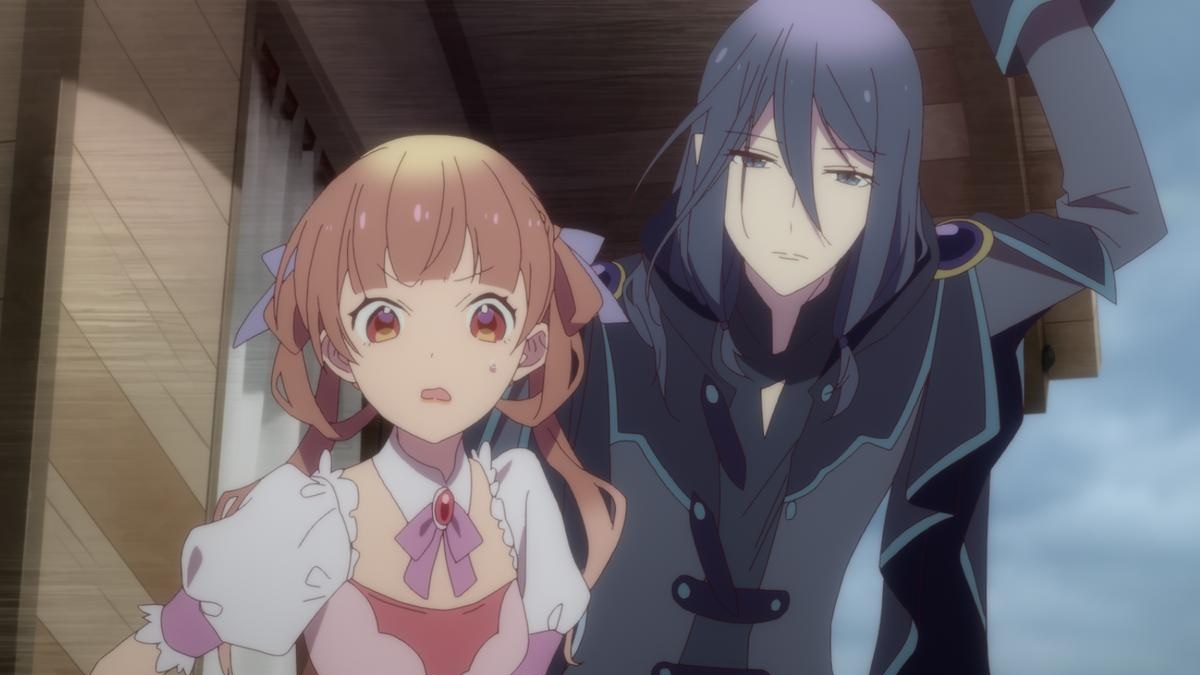
It’s unfortunate that seasonal shojo anime often struggle to compete with the popularity of shonen or seinen titles, a challenge that Sugar Apple Fairy Tale faced not once, but twice within a year. Despite airing alongside heavy hitters like Vinland Saga Season 2 and Jujutsu Kaisen Season 2, this series deserves more recognition.
Set in a fantasy world where humans coexist with fairies, the dynamic between the two species is fraught with tension. Ann, a determined young girl aspiring to become a Silver Sugar Master like her mother, defies societal norms by treating her fairy companion, Challe, as an equal rather than property. Season 2 further explores their evolving friendship while looking deeper into the thought-provoking social structures of this world.
Ann shines as a compelling lead, surrounded by a cast of memorable characters who enrich the story. Despite flying under the radar compared to its blockbuster counterparts, Sugar Apple Fairy Tale proves itself worthy of sharing the spotlight with the likes of Vinland Saga and Jujutsu Kaisen.
“Sugar Apple Fairy Tale” is a Japanese light novel series written by Miri Mikawa and illustrated by Aki. Serialized from 2010 to 2015, it has captured the hearts of many readers with its enchanting blend of fantasy, adventure, and heartwarming storytelling. The series was adapted into a manga and an anime, bringing its magical world and endearing characters to a wider audience. At its core, “Sugar Apple Fairy Tale” is a story about friendship, freedom, and the pursuit of dreams.
The story is set in a world where humans and fairies coexist, though not always harmoniously. In this world, fairies are often treated as inferior beings and are commonly enslaved by humans. The protagonist, Anne Halford, is a young girl with a dream of becoming a Silver Sugar Master, a prestigious title given to those who excel in the art of crafting magical sugar confections.
Anne’s journey begins after the death of her mother, a renowned Silver Sugar Master. Determined to follow in her mother’s footsteps, Anne sets out on a quest to participate in the Royal Candy Fair, where she hopes to earn the coveted title. Along the way, she buys a warrior fairy named Shall as her bodyguard. Unlike most humans, Anne treats Shall with kindness and respect, promising to grant him freedom once her journey is complete.
As they travel together, Anne and Shall encounter various challenges and adversaries, including rival confectioners and those who seek to exploit or harm fairies. Through their trials, they form a deep bond and learn valuable lessons about trust, loyalty, and the true meaning of freedom.
The relationship between Anne and Shall is central to the story. Their initial dynamic, with Anne as the master and Shall as the servant, evolves into a deep and mutual friendship. This progression highlights the importance of trust and understanding in forming genuine connections, transcending societal norms and prejudices.
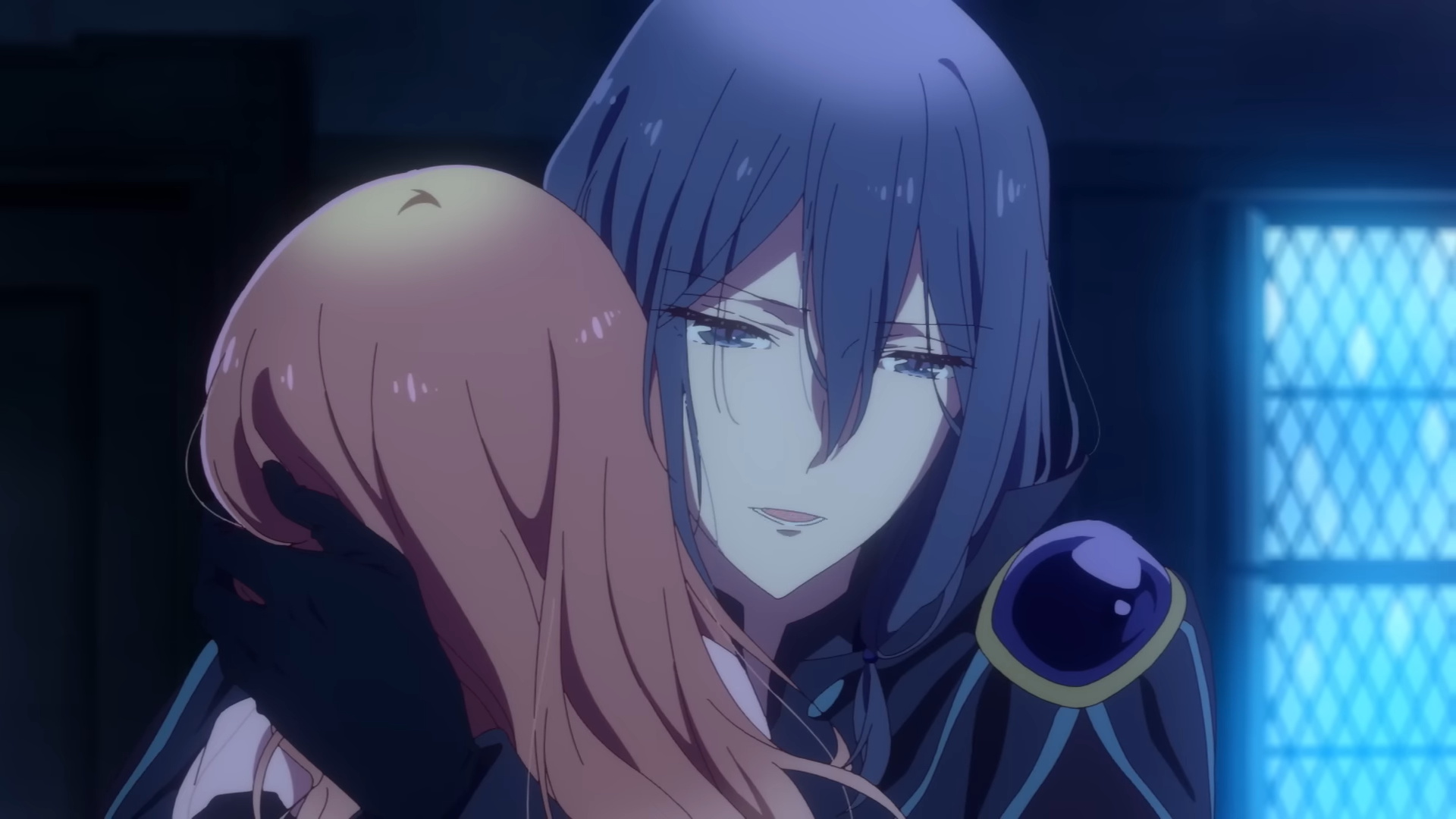
“Sugar Apple Fairy Tale” addresses themes of freedom and equality through the treatment of fairies in its world. Fairies, despite their intelligence and capabilities, are often subjugated by humans. Anne’s commitment to granting Shall his freedom reflects a broader message about the value of liberty and the injustice of oppression.
Anne’s unwavering determination to become a Silver Sugar Master embodies the theme of pursuing one’s dreams. Her journey is not just about mastering a craft but also about honoring her mother’s legacy and finding her own path. The series emphasizes perseverance, passion, and the importance of staying true to oneself.
Anne’s compassionate nature sets her apart in a world where fairies are often mistreated. Her kindness towards Shall and other fairies she meets challenges the status quo and serves as a powerful reminder of the impact of empathy and humanity in fostering positive change.
Anne is a strong-willed and kind-hearted protagonist whose dream of becoming a Silver Sugar Master drives the narrative. Her compassion for fairies and determination to succeed despite numerous obstacles make her a relatable and inspiring character.
Shall is a warrior fairy bound to serve Anne as her bodyguard. Initially distrustful and reserved, Shall’s character develops as he learns to trust Anne and confronts his own past and desire for freedom. His evolving relationship with Anne is a highlight of the series.
Jonas is a fellow confectioner and one of Anne’s rivals. His competitive nature and occasional antagonism add tension to Anne’s journey, while also highlighting different approaches to ambition and success.
Keith is another Silver Sugar Master who becomes Anne’s mentor. His guidance and wisdom helps Anne refine her skills and navigate the complexities of the confectionery world.
“Sugar Apple Fairy Tale” is richly detailed, with a unique blend of fantasy elements and societal structures. The art of sugar crafting is intricately described, showcasing the creativity and skill involved in the confectionery process. The treatment of fairies introduces a layer of social commentary, reflecting real-world issues of discrimination and inequality.
The series’ setting is both magical and grounded, with beautiful scenery and whimsical fairy creatures juxtaposed against the harsh realities of a world where freedom is not a given. This contrast enhances the story’s emotional depth and resonance.
Aki’s illustrations bring “Sugar Apple Fairy Tale” to life with delicate and expressive artwork. The character designs are detailed and entertaining, capturing the personalities and emotions of the characters. The visual representation of the sugar confections is particularly enchanting, highlighting the artistry and magic of the craft.
The manga adaptation retains the charm of the light novels, with careful attention to detail and a faithful portrayal of the story’s key moments. The anime adaptation further amplifies the visual appeal, with vibrant animation and a fitting soundtrack that enhances the overall experience.
“Sugar Apple Fairy Tale” has been well-received for its engaging story, endearing characters, and beautiful artwork. The series has garnered a dedicated fanbase, praised for its positive messages and emotional depth. Critics and readers alike have commended the series for its exploration of friendship, freedom, and the pursuit of dreams, making it a standout in the fantasy genre.
The adaptations into manga and anime have expanded the series’ reach, introducing its magical world to new audiences and solidifying its status as a beloved fantasy tale. The combination of heartfelt storytelling, compelling characters, and enchanting visuals ensures that “Sugar Apple Fairy Tale” remains a memorable and impactful work.
“Sugar Apple Fairy Tale” is a entertaining series that weaves together themes of friendship, freedom, and ambition into a magical and emotionally resonant narrative. Through the journey of Anne and Shall, readers are invited to explore a world where kindness and perseverance can overcome prejudice and adversity.
With its richly detailed world-building, endearing characters, and beautiful artwork, “Sugar Apple Fairy Tale” stands as a testament to the enduring power of compassion, dreams, and the bonds that unite us. Whether through the pages of the light novels, the entertaining manga, or the vibrant anime adaptation, “Sugar Apple Fairy Tale” offers a timeless and enchanting tale that continues to inspire and delight audiences worldwide.
3. Sailor Moon
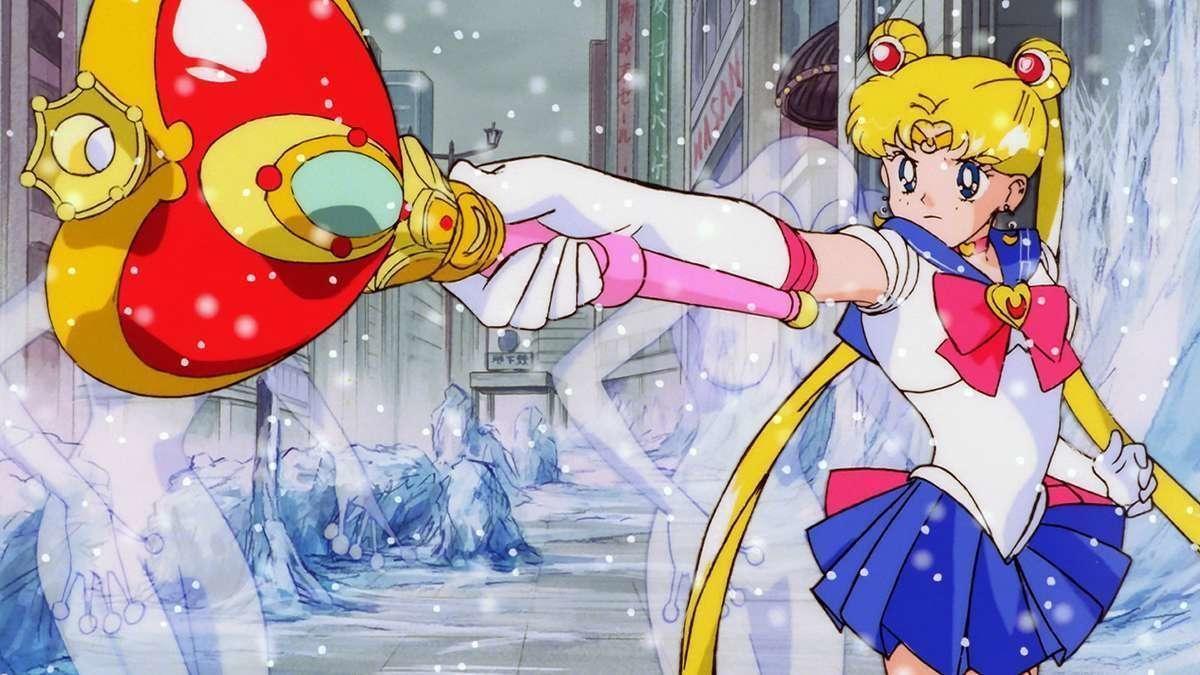
Sailor Moon holds an indelible place in the hearts of anime fans, particularly those who came of age in the 90s. With its irresistibly catchy theme song, the adventures of the Sailor Scouts have become iconic, making it a must-watch for any anime enthusiast. Whether viewers experienced the original series or the more recent retelling of Sailor Moon Crystal, the legendary journey of these magical guardians leaves a lasting impression.
While there may be other Magical Girl anime with superior storytelling, Sailor Moon reigns supreme as the most popular and arguably influential of them all. Despite some aspects of the original series not aging gracefully, the show’s overall charm and enduring appeal remain undeniable.
“Sailor Moon,” originally known as “Bishoujo Senshi Sailor Moon” in Japan, is a seminal work in the magical girl genre. Created by Naoko Takeuchi, the manga was first serialized in Nakayoshi magazine from 1991 to 1997. It quickly gained immense popularity, leading to an anime adaptation by Toei Animation, which aired from 1992 to 1997. The franchise has since expanded into various media, including movies, musicals, and merchandise, solidifying its status as a cultural icon.
“Sailor Moon” follows the adventures of Usagi Tsukino, a clumsy and ordinary 14-year-old girl who discovers she is the reincarnation of Sailor Moon, a warrior destined to protect Earth from evil forces. Guided by Luna, a talking cat, Usagi must find and awaken her fellow Sailor Guardians, protect the legendary Silver Crystal, and defeat the nefarious Dark Kingdom. Throughout the series, Usagi and her friends grow stronger, both as warriors and individuals, as they face increasingly powerful enemies and uncover the mysteries of their past lives.
Usagi Tsukino/Sailor Moon: The protagonist, Usagi, starts as a crybaby but grows into a courageous leader. Her journey from a regular schoolgirl to a powerful guardian emphasizes themes of personal growth and responsibility.
Ami Mizuno/Sailor Mercury: The brains of the group, Ami is a genius with a kind heart. She represents intelligence and compassion, often acting as the team’s strategist.
Rei Hino/Sailor Mars: A shrine maiden with psychic abilities, Rei is passionate and strong-willed. Her fiery personality complements her powers, symbolizing dedication and protection.
Makoto Kino/Sailor Jupiter: Makoto is physically strong and nurturing, embodying the balance between toughness and kindness. She provides both strength and comfort to her friends.
Minako Aino/Sailor Venus: The former Sailor V, Minako is a seasoned warrior with a cheerful disposition. She represents love and beauty, often bringing optimism to the group.
One of the central themes of “Sailor Moon” is empowerment. Each Sailor Guardian undergoes significant personal growth, gaining confidence and strength as they confront their fears and insecurities. Usagi’s transformation from a hesitant girl to a determined leader exemplifies the empowering message of the series: anyone can become a hero with courage and determination.
The bonds between the Sailor Guardians are a cornerstone of the series. Their friendship provides emotional support and strength, allowing them to overcome formidable foes. The series emphasizes the importance of trust, loyalty, and collaboration, showing that unity is essential for success.
“Sailor Moon” goes deeply into the themes of love and sacrifice. Usagi’s love for her friends, family, and her destined partner, Mamoru Chiba (Tuxedo Mask), often drives her actions. The series explores the idea that true love requires selflessness and the willingness to make sacrifices for the well-being of others.

The classic battle between good and evil is central to “Sailor Moon.” The Sailor Guardians’ mission to protect Earth from dark forces underscores the moral that goodness, justice, and compassion will ultimately triumph over malevolence and tyranny.
Naoko Takeuchi’s artwork in “Sailor Moon” is characterized by its elegant and expressive style. The character designs are iconic, with each Guardian’s outfit reflecting their unique powers and personality. The use of flowing lines, detailed costumes, and vibrant transformations adds a magical quality to the visuals. The anime adaptation enhances this with dynamic animation, memorable transformation sequences, and a catchy soundtrack that has become synonymous with the series.
“Sailor Moon” has had a profound impact on the magical girl genre and popular culture at large. It introduced many Western audiences to anime, becoming a gateway for the medium’s global expansion. The series’ emphasis on strong, relatable female characters inspired countless other works and resonated with viewers of all ages.
The franchise’s influence extends beyond entertainment. “Sailor Moon” has been credited with promoting gender equality and empowering young women to embrace their strengths and pursue their dreams. The series’ positive messages and inclusive themes have made it a lasting symbol of empowerment and resilience.
Anime Series: The original anime ran for five seasons, with each arc adapting different parts of the manga. The anime introduced new characters and storylines, expanding the “Sailor Moon” universe.
Movies: Several films have been released, including “Sailor Moon R: The Movie,” “Sailor Moon S: The Movie,” and “Sailor Moon SuperS: The Movie.” These films often explore deeper aspects of the characters and their relationships.
Sailor Moon Crystal: A more recent adaptation, “Sailor Moon Crystal,” aimed to stay truer to the manga’s storyline. It provided a modern retelling of the original story with updated animation and character designs.
Musicals and Stage Plays: The “Sailor Moon” franchise includes numerous musical adaptations known as “Sera Myu.” These live performances add a unique dimension to the series, showcasing the story through music and dance.
“Sailor Moon” is more than just a manga or anime; it is a cultural phenomenon that continues to inspire and entertain audiences worldwide. Its blend of magical adventure, heartfelt friendship, and empowering themes makes it a timeless classic. Naoko Takeuchi’s creation has left an indelible mark on anime and beyond, celebrating the power of love, friendship, and inner strength. Whether through the pages of the manga, the vibrant episodes of the anime, or the dazzling live performances, “Sailor Moon” remains a beloved and enduring symbol of hope and empowerment.
2. Nana
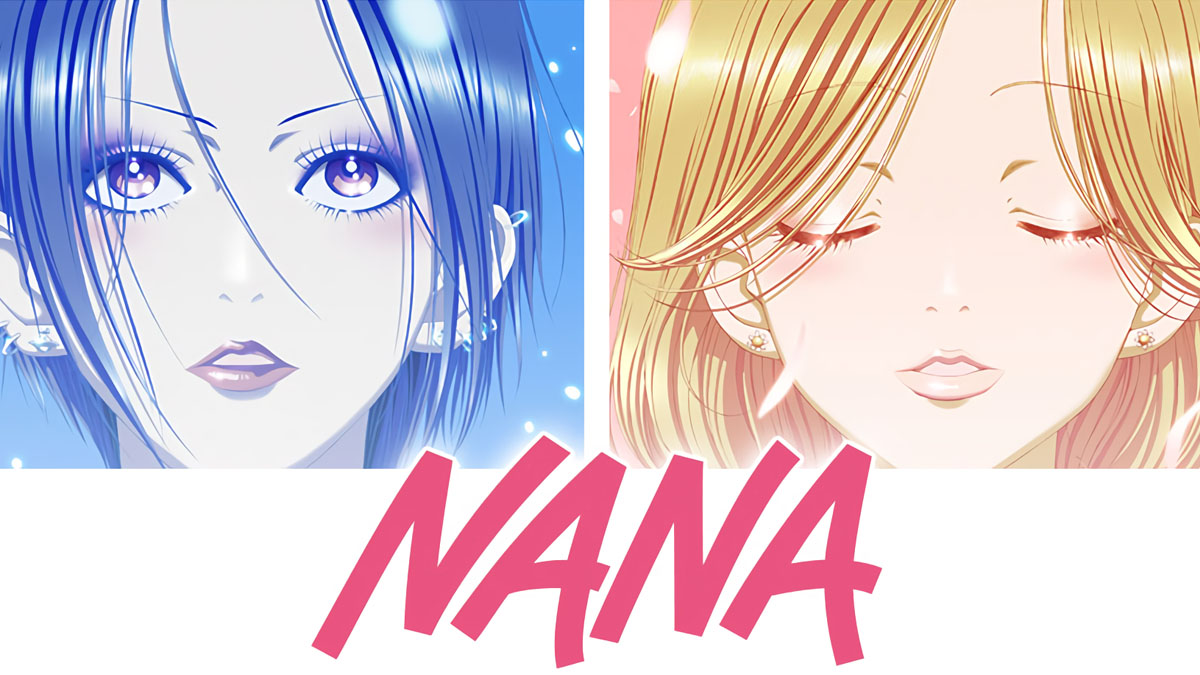
The intertwining lives of the innocent Nana Komatsu and the punk-rock vocalist Nana Osaki stand as one of the most iconic tales in all of shojo anime. Viewers are drawn into their world, empathizing with the characters as they navigate through the rollercoaster of romance, heartbreaks, and the myriad challenges that life presents.
While there are numerous exceptional romance anime, the story of Nana holds a special place. Its only drawback lies in its conclusion, as the manga was unfortunately put on hold indefinitely in 2009 due to the grave illness of its author, Ai Yazawa, and her challenging recovery. However, in 2022, there was a glimmer of hope as the mangaka provided an update on the potential continuation of the story.
Nonetheless, the anime remains a must-watch, offering 50 episodes of superb storytelling. Both main characters are intricately developed, and their personalities blossom beautifully through their genuine and relatable friendship.
“Nana” is a Japanese manga series written and illustrated by Ai Yazawa. Serialized in Cookie magazine from 2000 to 2009, the series has gained immense popularity for its realistic portrayal of relationships, complex characters, and its blend of romance and drama set against the backdrop of the music industry. “Nana” has also been adapted into two live-action films and a popular anime series, further cementing its place in the hearts of fans worldwide.
“Nana” follows the lives of two young women, both named Nana, who meet by chance on a train to Tokyo and end up sharing an apartment. Despite their contrasting personalities and backgrounds, they form a deep and lasting friendship that becomes the cornerstone of the series.
Nana Komatsu, later nicknamed Hachi, is a cheerful, naive girl who moves to Tokyo to be with her boyfriend and start a new life. She dreams of finding true love and happiness but often finds herself in tumultuous relationships.
Nana Osaki is a cool, aloof punk rock singer with ambitions of making it big in the music industry. She moves to Tokyo to pursue her dream of becoming a professional musician after leaving her previous band and her boyfriend, Ren Honjo, who is now a successful guitarist in a popular band.
As their lives intertwine, the story goes into their personal struggles, romantic entanglements, and the challenges they face in their respective pursuits. The series beautifully explores themes of love, friendship, ambition, and the complexities of human relationships.
At the heart of “Nana” is the friendship between the two Nanas. Their bond, despite their differences, becomes a source of strength and comfort for both. The series highlights the importance of having someone to rely on during tough times and the impact of genuine friendship on personal growth and happiness.
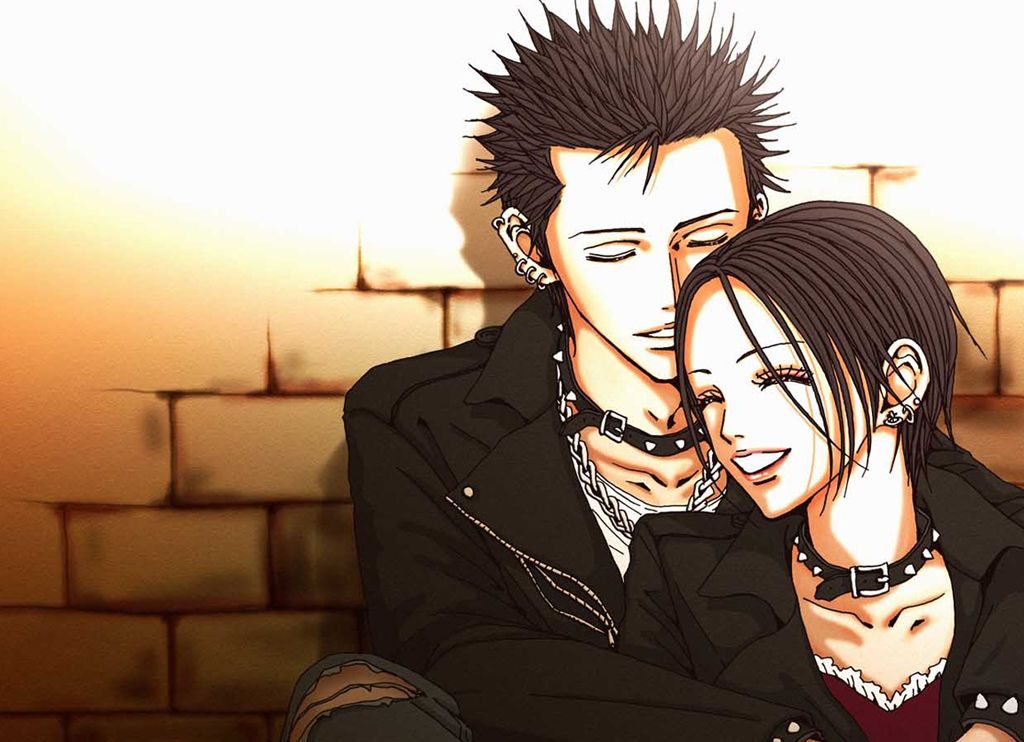
“Nana” presents a realistic portrayal of romantic relationships, showcasing the highs and lows of love. From Hachi’s tumultuous love life to Nana Osaki’s complicated relationship with Ren, the series explores the emotional rollercoaster that comes with love. It goes into themes of unrequited love, infidelity, and the sacrifices one makes for their partner.
The pursuit of dreams and the sacrifices involved is a recurring theme in “Nana.” Nana Osaki’s journey to becoming a successful musician is fraught with challenges, including the pressure to succeed, the fear of failure, and the tension between personal and professional life. Similarly, other characters in the series grapple with their ambitions and the impact on their relationships and well-being.
Both Nanas undergo significant personal growth and self-discovery throughout the series. Hachi learns to navigate her own desires and aspirations, while Nana Osaki confronts her vulnerabilities and the emotional scars from her past. The series portrays the journey of finding oneself and the importance of staying true to one’s values and dreams.
Hachi is a kind-hearted, optimistic young woman who often finds herself in complicated romantic situations. Her journey in Tokyo involves finding her own path, separate from her dependence on romantic relationships. Her growth as an individual and her evolving friendship with Nana Osaki are central to the story.
Nana Osaki is a determined and passionate punk rock singer with a troubled past. Her cool demeanor and fierce independence mask a deeply emotional and vulnerable side. Her relationship with Ren and her ambitions in the music industry drive much of the narrative, as she balances her professional goals with her personal struggles.
Ren is Nana Osaki’s ex-boyfriend and a talented guitarist for the popular band Trapnest. His complex relationship with Nana and his own battles with fame and addiction add depth to the story. Ren’s character highlights the sacrifices and challenges faced by those in the music industry.
Nobu is the guitarist for Nana Osaki’s band, Blast. He is kind-hearted, loyal, and supportive, often serving as a voice of reason within the group. His unrequited love for Hachi and his dedication to the band make him a central figure in the series.
Takumi is the leader and bassist of Trapnest. He is charismatic, ambitious, and often manipulative, particularly in his relationships. His involvement with Hachi introduces significant tension and conflict in the story, as he represents both opportunity and danger.
Ai Yazawa’s art in “Nana” is distinctive and stylish, characterized by detailed character designs, fashionable clothing, and expressive faces. Her ability to capture the nuances of emotion and the subtleties of human interaction adds depth to the storytelling. The urban setting of Tokyo, combined with the vibrant music scenes, creates a visually engaging backdrop that enhances the narrative.
“Nana” has been widely praised for its realistic portrayal of relationships and its complex, well-developed characters. The series’ exploration of love, friendship, and ambition resonates with readers, making it a beloved classic in the manga world.
The anime adaptation, produced by Madhouse, has also been well-received for its faithful adaptation of the manga’s story and its engaging soundtrack, which brings the musical elements of the series to life. The live-action films further expanded the series’ popularity, introducing it to a broader audience.
Critics and fans alike have lauded “Nana” for its mature and honest depiction of life’s challenges, as well as its emotional depth and relatability. The series’ ability to tackle serious themes with sensitivity and authenticity has earned it a dedicated fanbase and critical acclaim.
“Nana” is a poignant and compelling series that offers a rich exploration of love, friendship, and the pursuit of dreams. Ai Yazawa’s masterful storytelling, combined with her distinctive art style, creates a deeply immersive and emotionally resonant experience.
The series’ realistic portrayal of the complexities of human relationships, its memorable characters, and its engaging blend of romance and drama make “Nana” a must-read for fans of manga and a standout entry in the genre. Whether through the pages of the manga, the entertaining anime adaptation, or the live-action films, “Nana” continues to leave a lasting impact on audiences around the world, celebrating the enduring power of love, friendship, and music.
1. My Happy Marriage
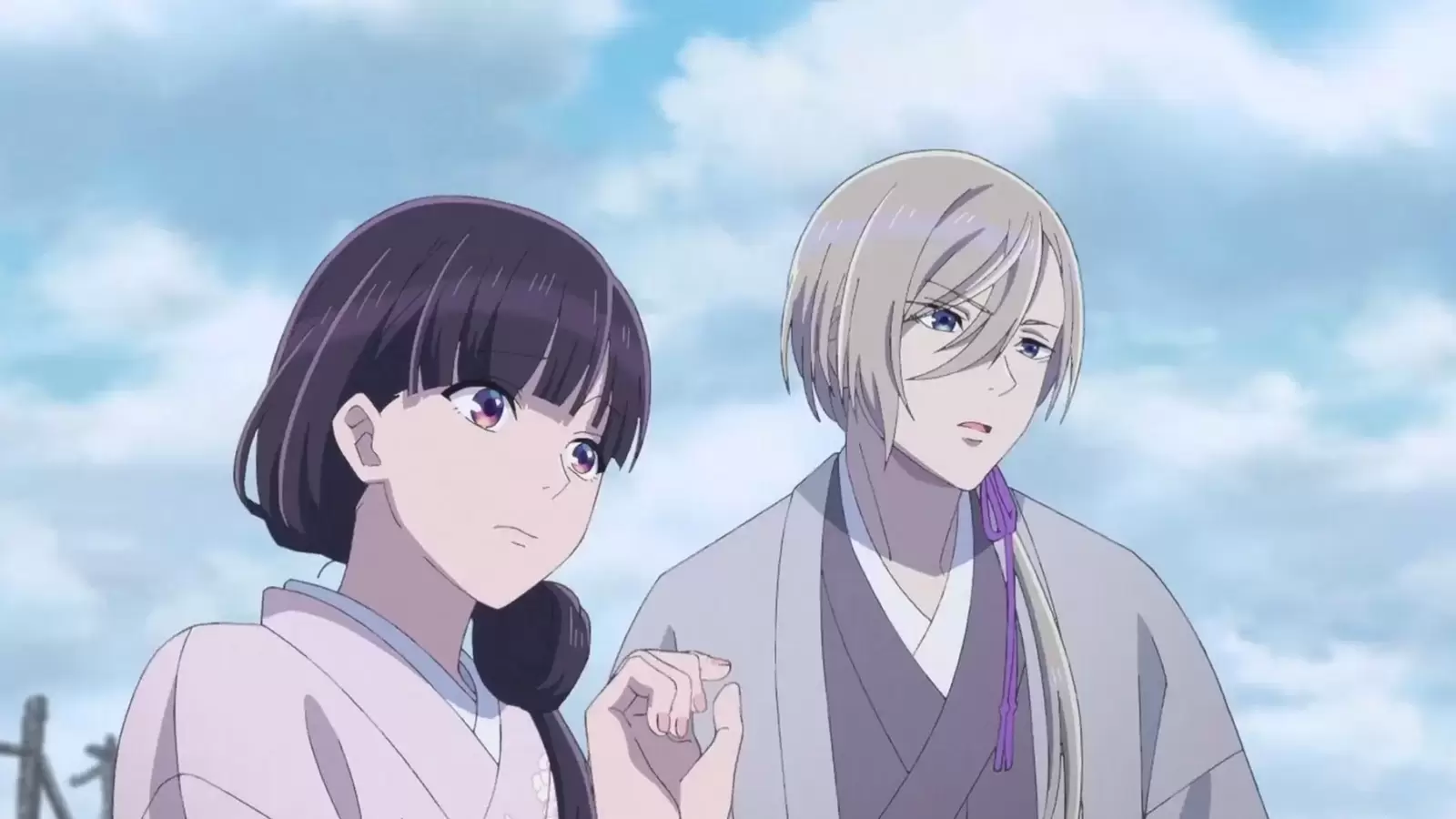
Akumi Agitogi’s My Happy Marriage has enjoyed success across various mediums since its inception as a light novel, and its anime adaptation is poised to be another triumph. The series, gorgeously animated by Kinema Citrus and available exclusively on Netflix, is almost compelling enough to justify a one-month subscription on its own, although those undecided may prefer to wait until the entire season is available for streaming.
Presented as a potential bride for Kiyoka, a military figure known for driving away his suitors, Miyo faces the threat of rejection that could seal her fate. However, contrary to expectations, their relationship takes an unexpected turn as Miyo and Kiyoka gradually develop a genuine connection, with Kiyoka finding himself drawn to Miyo. Their blossoming romance, tender and heartwarming, unfolds into a timeless love story. Adding depth to their bond is a supernatural element that further intertwines their destinies.
“Hepburn: Watashi no Shiawase na Kekkon” is a Japanese drama series that aired from July 23 to September 24, 2016, on TBS. The title translates to “Hepburn: My Happy Marriage” in English. Directed by Ryutaro Kawashima and starring Haru, Masahiro Higashide, and Tsubasa Honda, the drama is based on the novel “Watashi no Shiawase na Kekkon” by Hiro Arikawa.
The series follows the story of Asuka Takanashi (played by Haru), a young woman working as a rookie editor at a publishing company. Asuka is passionate about her job and determined to succeed, but her life takes an unexpected turn when she meets renowned photographer Ryu Nanami (played by Masahiro Higashide). Despite their initial clashes, Asuka and Ryu develop a deep connection and eventually fall in love.
Their relationship faces numerous challenges as they navigate the complexities of their respective careers and personal lives. Asuka’s best friend and coworker, Maki Saijo (played by Tsubasa Honda), provides support and guidance along the way, while also dealing with her own romantic entanglements.
At its core, “Hepburn: My Happy Marriage” explores the intricacies of love and relationships. Asuka and Ryu’s romance is portrayed as a journey of self-discovery and growth, as they learn to navigate the ups and downs of their relationship. The series goes into the challenges of balancing career aspirations with personal happiness, as well as the importance of communication, trust, and compromise in maintaining a healthy partnership.
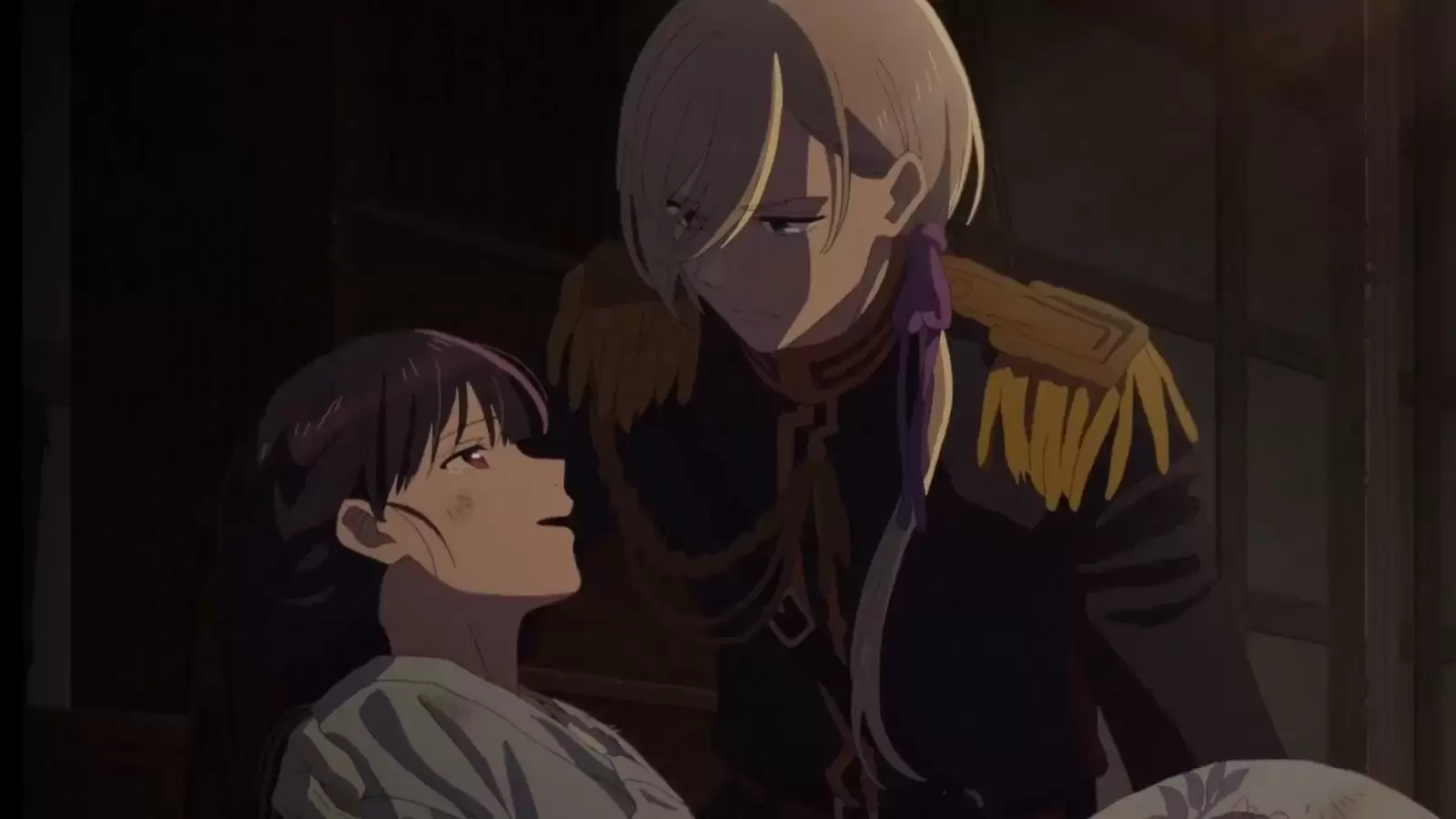
The series also examines the pressures and expectations placed on young professionals in the competitive world of publishing and photography. Asuka’s determination to succeed in her career is a driving force in the narrative, as she grapples with office politics, deadlines, and the demands of her superiors. Ryu’s struggles as a photographer, balancing artistic integrity with commercial success, add depth to the exploration of career ambition and creative fulfillment.
Asuka’s relationship with Maki serves as a central pillar of the series, highlighting the importance of friendship and support in times of need. Maki’s unwavering loyalty and encouragement provide Asuka with a sense of stability and camaraderie, while also offering a sounding board for her hopes and fears. Their bond reinforces the theme of mutual support and the power of friendship to overcome life’s challenges.
Throughout the series, Asuka and Ryu grapple with questions of identity and self-discovery as they navigate the complexities of adulthood and romance. Asuka’s journey from a rookie editor to a confident professional reflects her growth and maturation as a person, while Ryu’s introspection and introspection as a photographer lead him to confront his own insecurities and aspirations. The series emphasizes the importance of staying true to oneself and pursuing one’s passions, even in the face of uncertainty and doubt.
Asuka is the protagonist of the series, a determined and hardworking young woman with a passion for her career. Despite facing numerous challenges, Asuka remains resilient and optimistic, determined to succeed in both her personal and professional life. Her journey of self-discovery and romance forms the heart of the series, as she navigates the complexities of love, friendship, and ambition.
Ryu is a talented photographer with a mysterious past and a reputation for being aloof and enigmatic. Despite his initial reluctance to open up to others, Ryu finds himself drawn to Asuka and eventually falls in love with her. His struggles with artistic integrity, commercial success, and personal fulfillment add depth to the series, as he grapples with questions of identity and purpose.
Maki is Asuka’s best friend and coworker, a cheerful and supportive presence in her life. Despite her own romantic entanglements, Maki remains a steadfast ally to Asuka, offering advice, encouragement, and a shoulder to lean on when needed. Her friendship with Asuka serves as a grounding force in the series, highlighting the importance of mutual support and camaraderie.
The cinematography in “Hepburn: My Happy Marriage” is characterized by its warm and intimate aesthetic, with soft lighting and picturesque settings that evoke a sense of romance and nostalgia. The series’ stylish visuals and evocative soundtrack enhance the emotional impact of key moments, while also capturing the bustling energy of Tokyo’s urban area.
“Hepburn: My Happy Marriage” received positive reviews from audiences and critics alike for its engaging storyline, compelling characters, and heartfelt performances. The series’ exploration of love, ambition, and friendship resonated with viewers, making it a popular addition to the romantic drama genre.
Critics praised the chemistry between the main cast, particularly the performances of Haru and Masahiro Higashide, whose on-screen romance entertained audiences. The series’ poignant portrayal of the challenges facing young professionals in modern society struck a chord with viewers, earning it praise for its authenticity and relatability.
“Hepburn: My Happy Marriage” is a heartwarming and engaging drama that explores the complexities of love, ambition, and friendship in contemporary Japan. Through its compelling storyline, relatable characters, and stylish visuals, the series offers a poignant and insightful look into the lives of young professionals navigating the challenges of adulthood and romance.
Whether through its heartfelt moments of romance, its nuanced exploration of career ambition, or its themes of friendship and self-discovery, “Hepburn: My Happy Marriage” invites viewers on an emotional journey of love, growth, and fulfillment. With its compelling characters, engaging storyline, and stylish presentation, the series is sure to resonate with audiences looking for a entertaining and uplifting romantic drama.

